Cardigan, whose Welsh name is Aberteifi, is the second-largest town in the county of Ceredigion, after Aberystwyth. It is situated on the tidal reach of the Afon Teifi, where Ceredigion borders Pembrokeshire.
Cardigan is an ancient town with a rich history—this is where the National Eisteddfod was born—and today, it has become a vibrant cultural hub, featuring arts, events, and music festivals. There are several interesting things to do and beautiful places to visit nearby. It is also well connected to Pembrokeshire and Carmarthenshire, making it an ideal base for exploring those areas.
In this article, I will introduce you to the ten main things worth doing in and around Aberteifi, as well as provide useful information and answer common questions. Happy reading!
See Cardigan on
Google Maps – Apple Maps
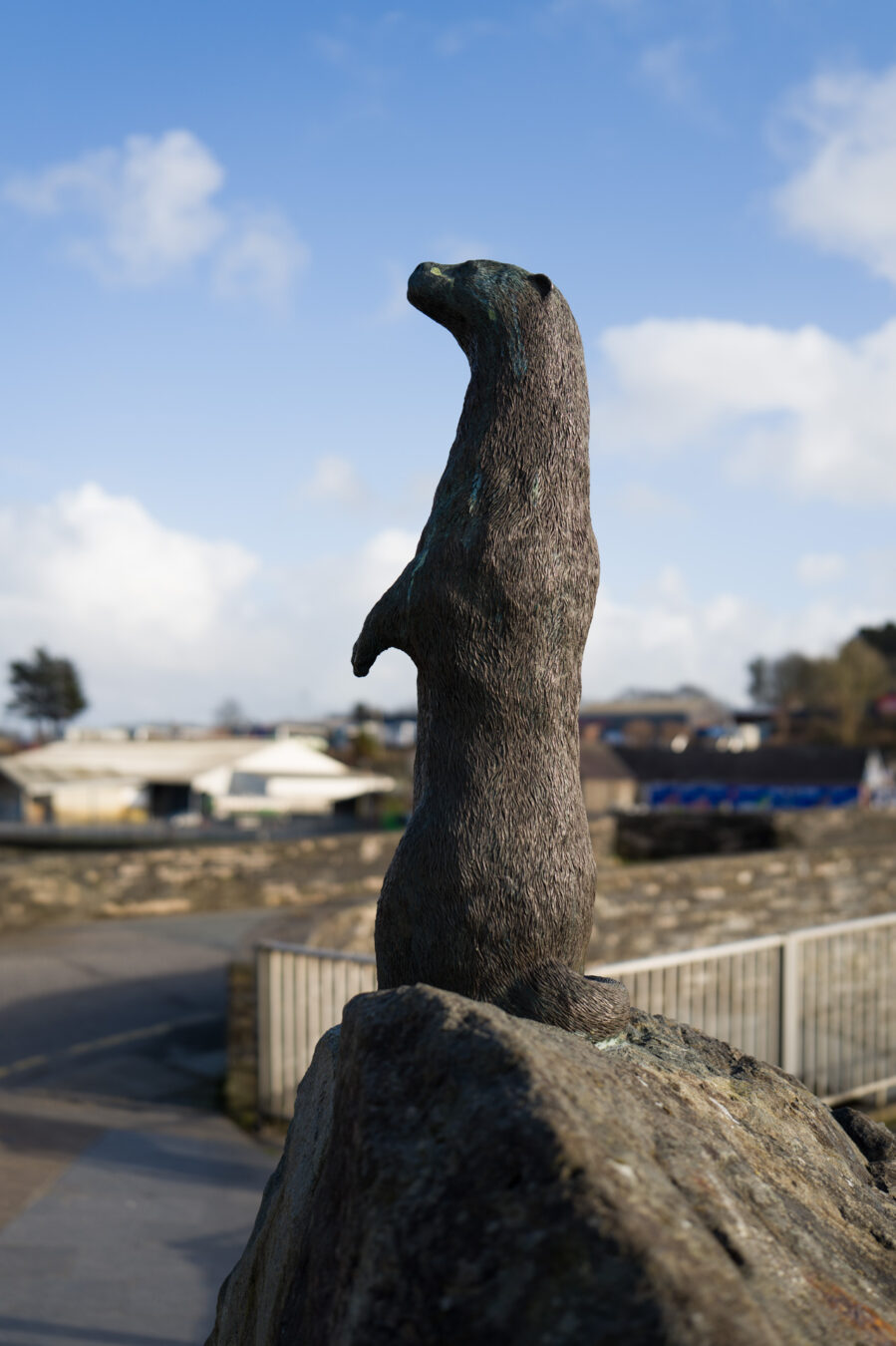
Photo Credits
Photos of canoes on the River Teifi, Mwnt, and select photos at the Welsh Wildlife Centre (Glasshouse, hides, kingfisher) are from the Wales Asset database. © Hawlfraint y Goron / © Crown copyright (2022) Cymru Wales. Additional credits can be found on individual photos.
All the other photos are property of Mathieu Gasquet / We Travel Wales.
1. Visit Cardigan Castle
Cardigan Castle is one of the most important castles in Wales. It was the first stone castle built by a Welshman, Rhys ap Gruffydd, and it is where the Eisteddfod, Wales’ renowned national cultural festival, began in 1176. After falling into disrepair, the castle was restored and opened to the public in 2015. Walking around the walls gives you a great view of the River Teifi and the High Street.
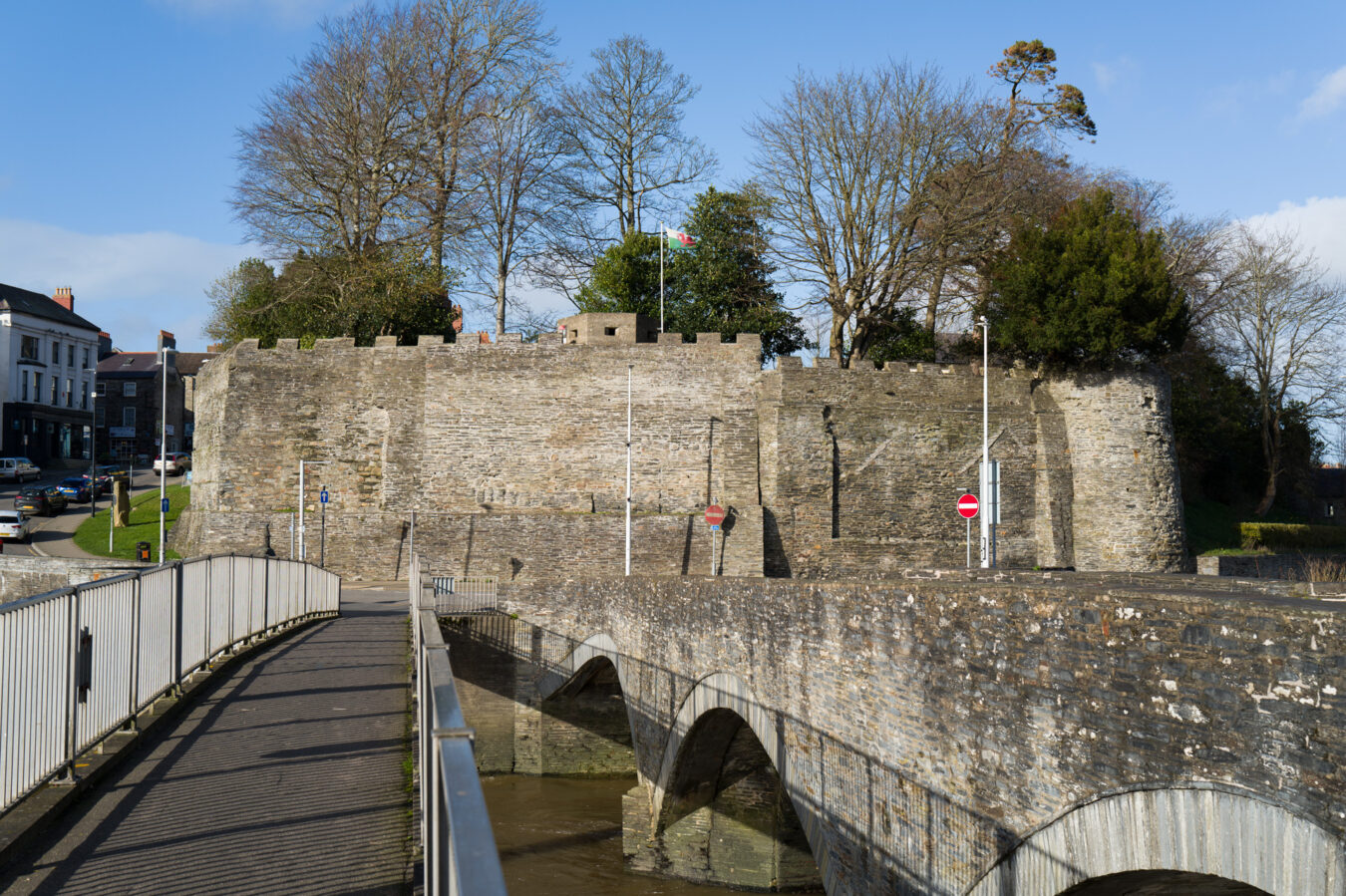
Castell Aberteifi offers much more than just ancient walls. There is a heritage centre in the Green House and a Grade II listed garden that is home to more than 130 types of plants. The 1176 Café and Restaurant serves meals made with locally sourced produce in a contemporary setting. You can even stay at the castle, in one of the rooms of its luxurious Heritage Bed & Breakfast and Self-Catering accommodation.
There are many events throughout the year, including open-air concerts. And if that isn’t enough, there is also the Escape Room, where you travel back to 1832 to uncover the mystery of a missing pearl necklace!
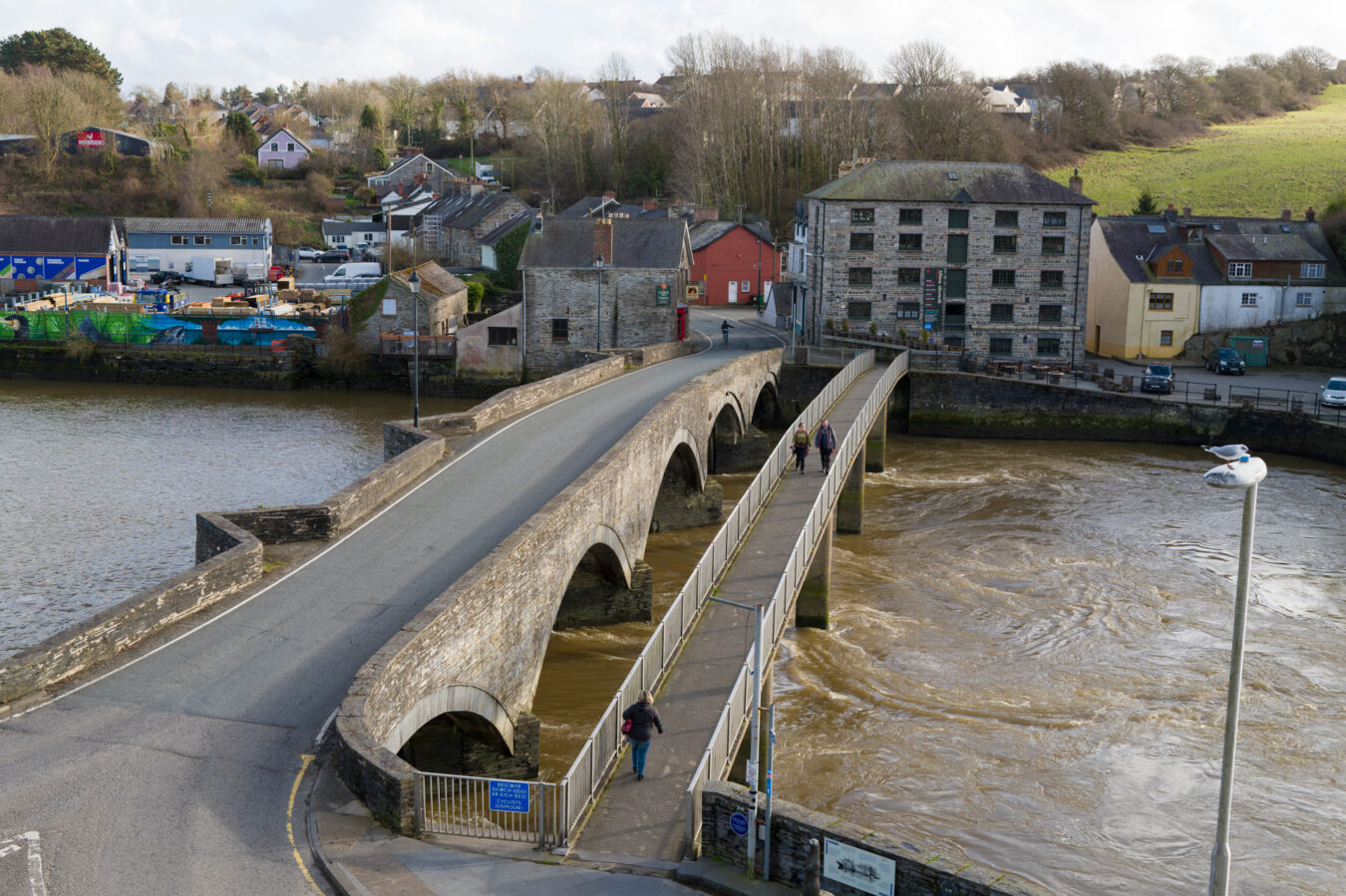
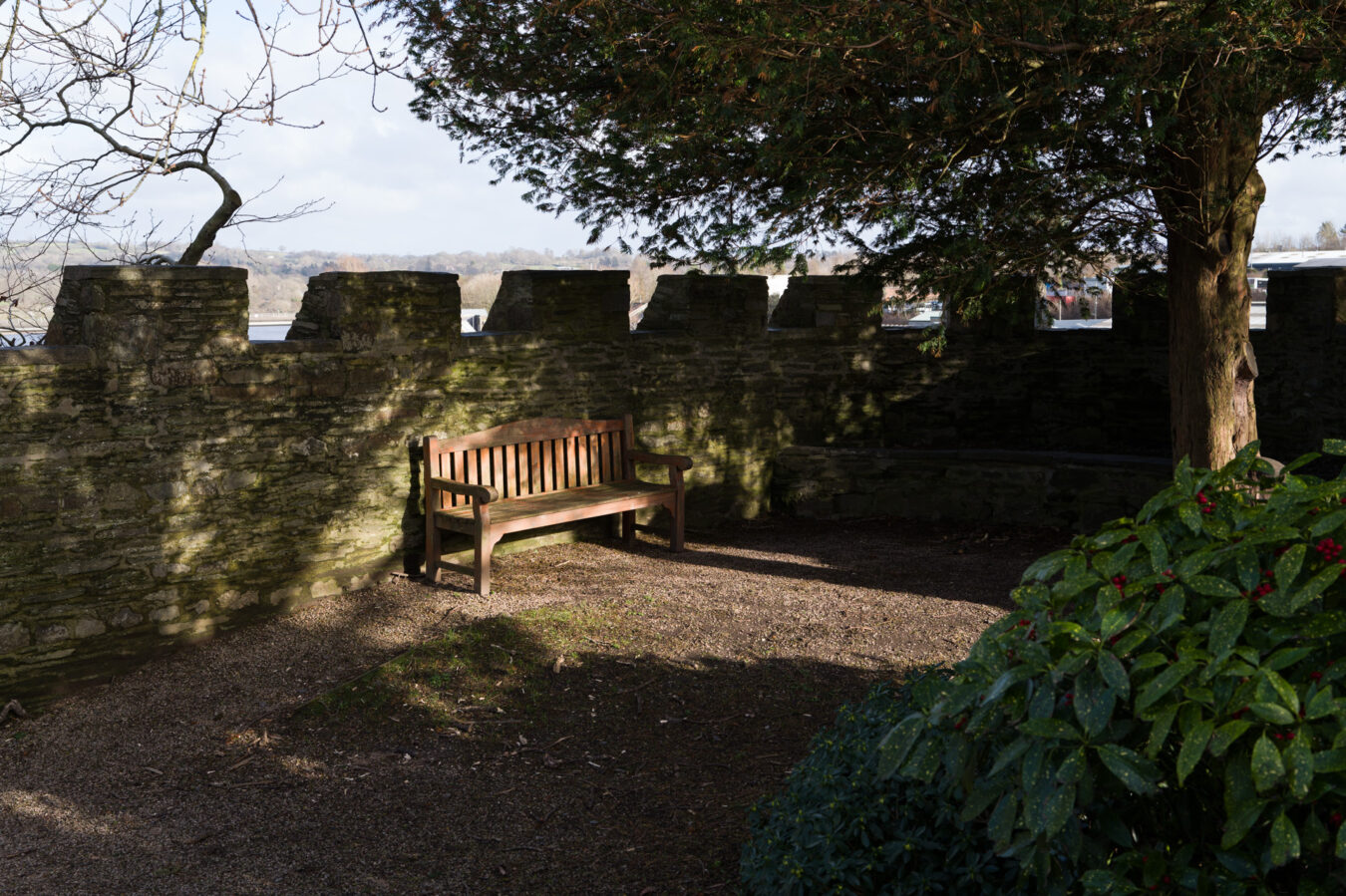
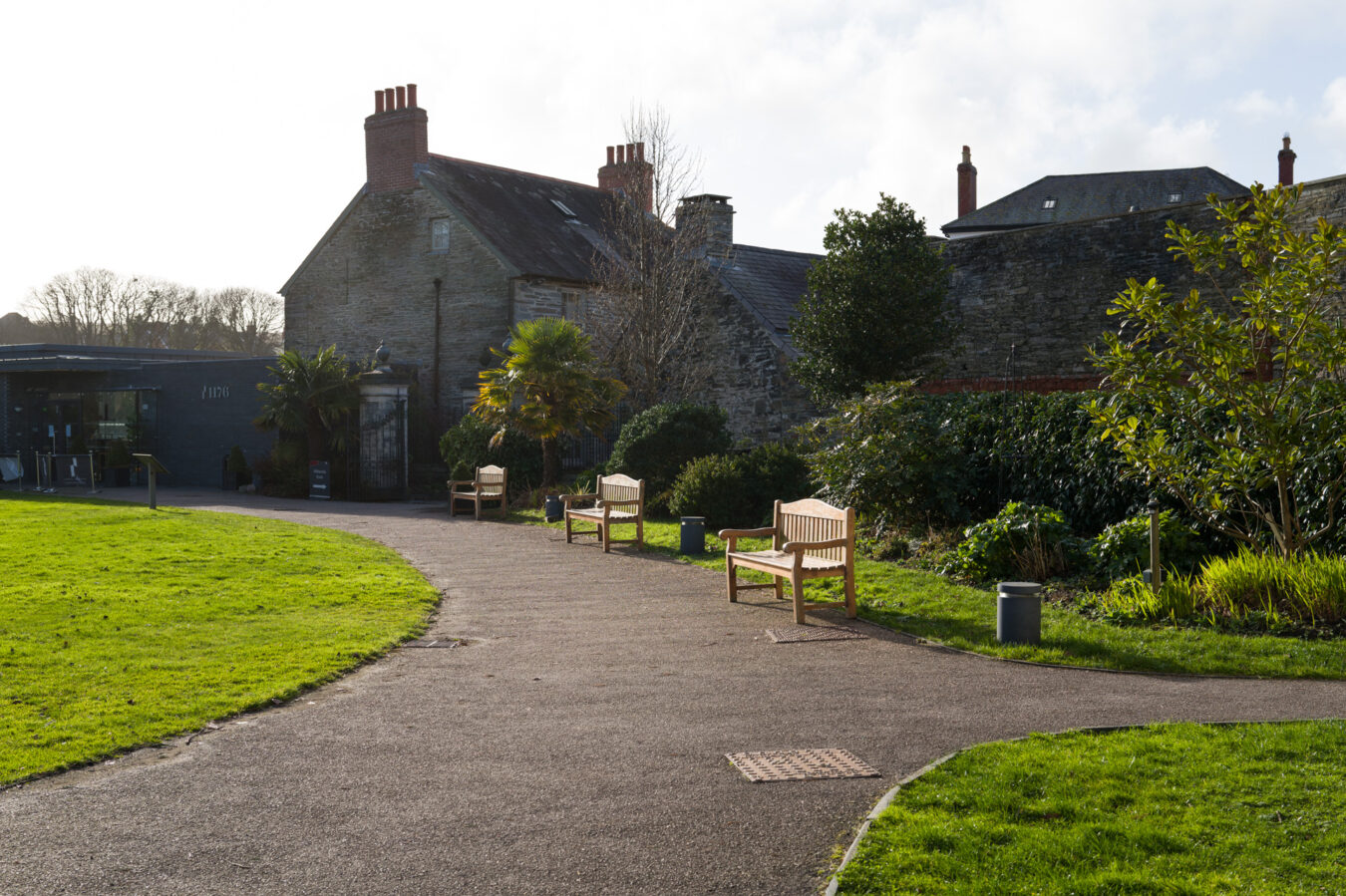
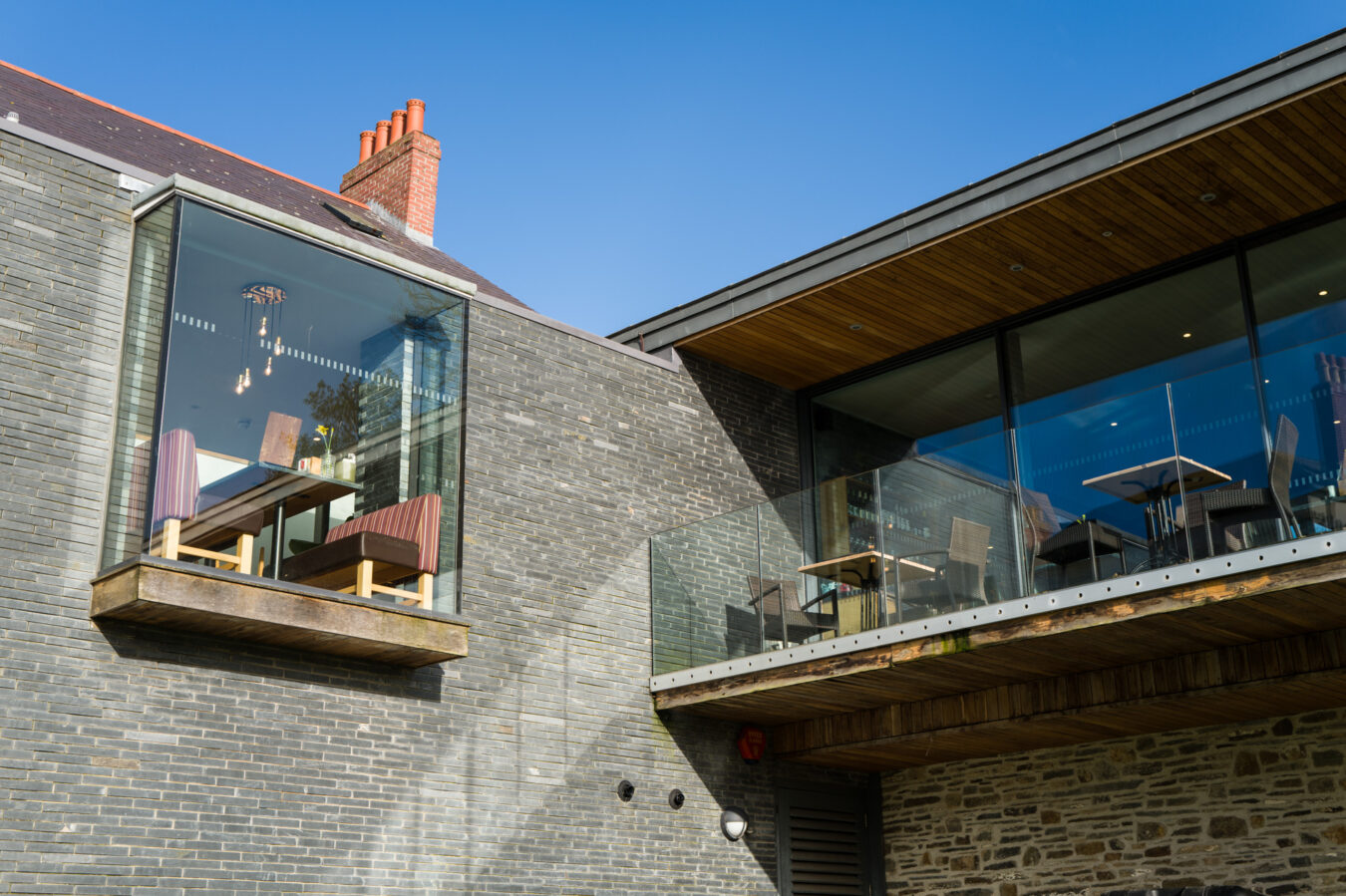
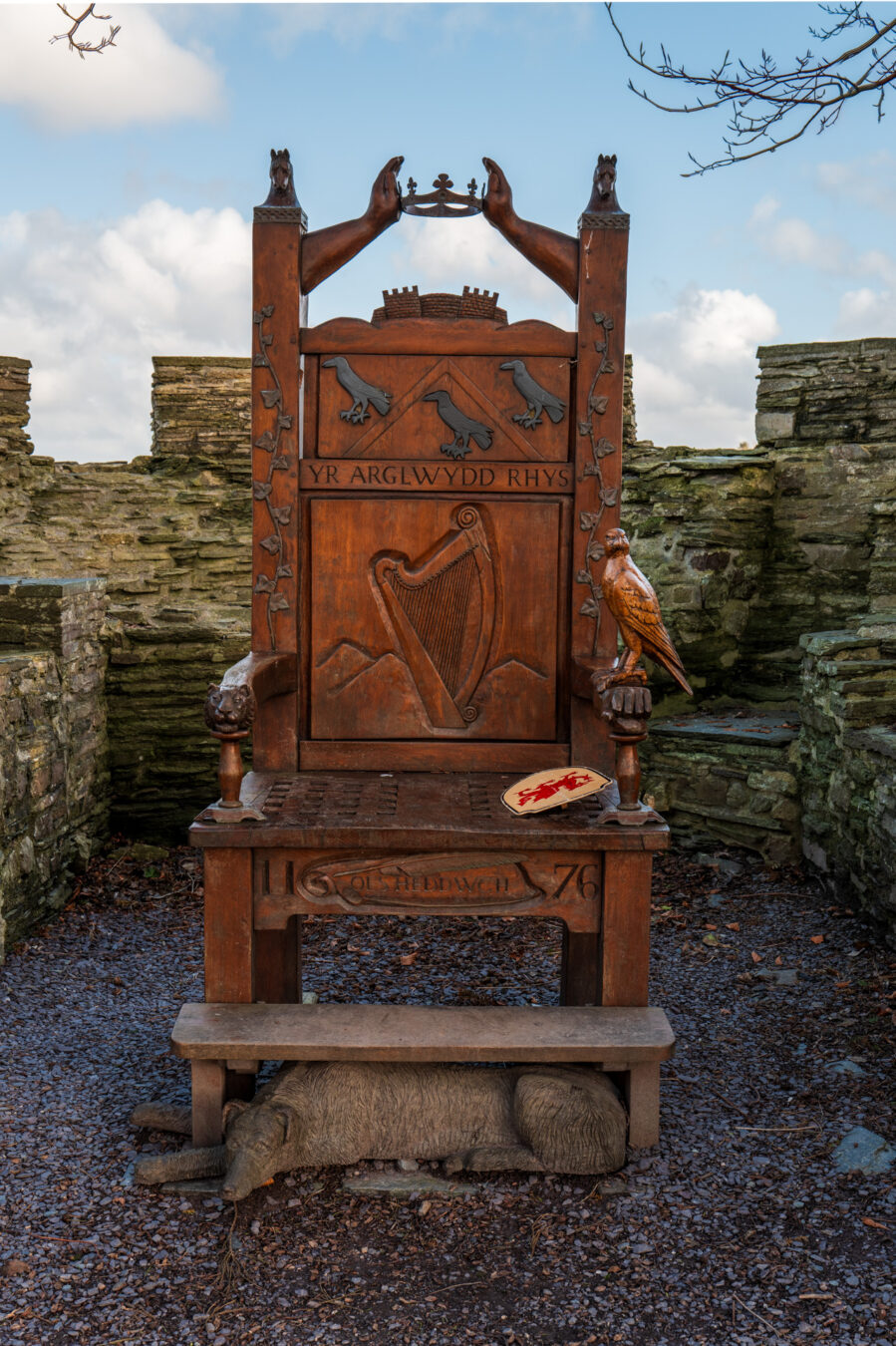

Tickets are £8 for adults and £5 for children. Dogs are allowed (£2), and family tickets are available. The castle and 1176 Restaurant are accessible to wheelchair users. Opening days vary depending on the time of year, so make sure to check the official website for the most up-to-date information.
2. Enjoy An Evening of Film And Theatre
Cardigan is an interesting hub for arts, theatre, and production, and it boasts not one but two theatres.
The first, Theatr Mwldan, is Wales’ only truly independent multiplex cinema and features three fully digital screens. Built on the site of the town’s old abattoir, Mwldan also hosts stage performances including drama, music, and opera. Additionally, it produces its own shows, and the venue includes a cosy café. See more information on their website.
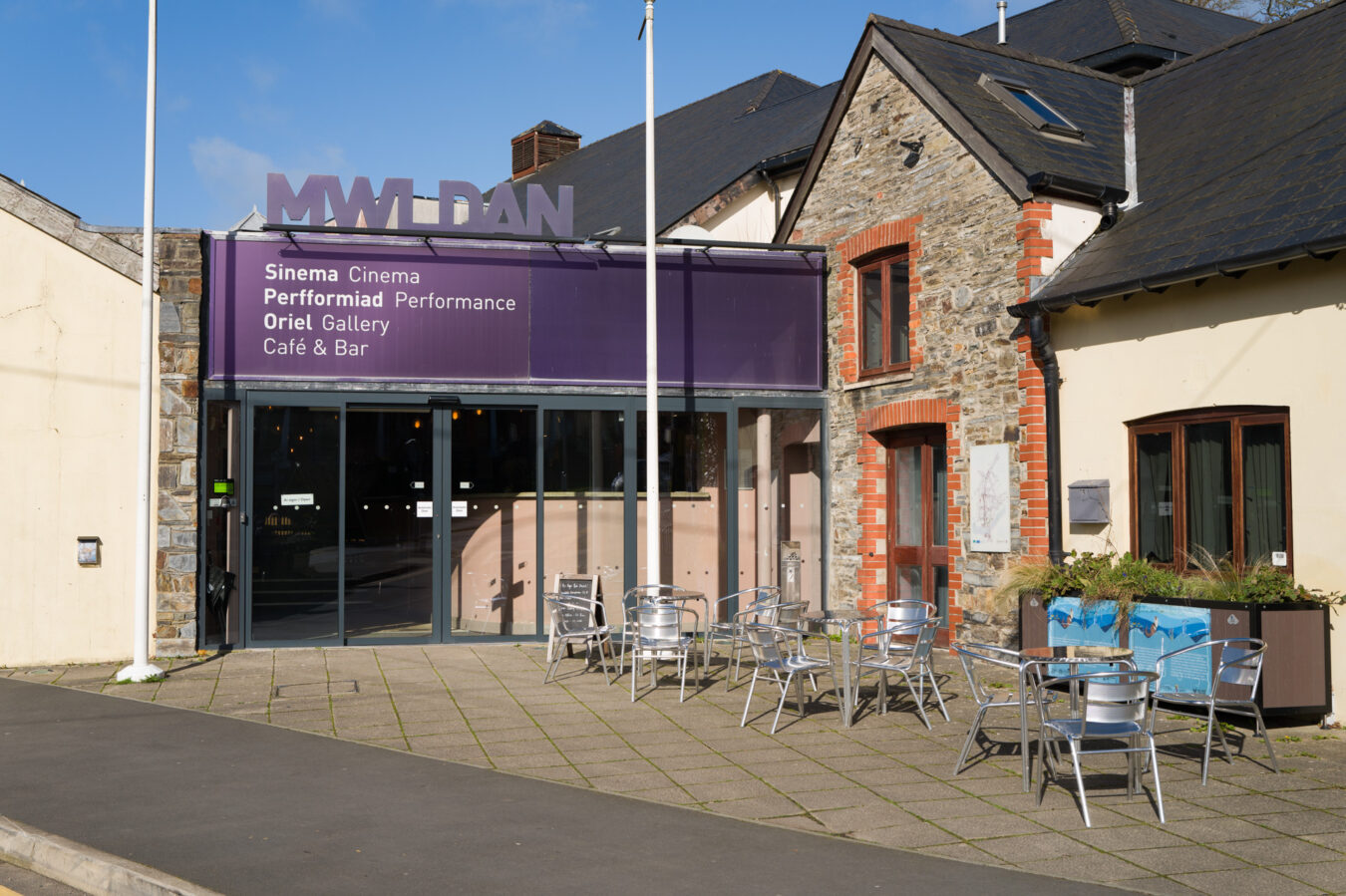
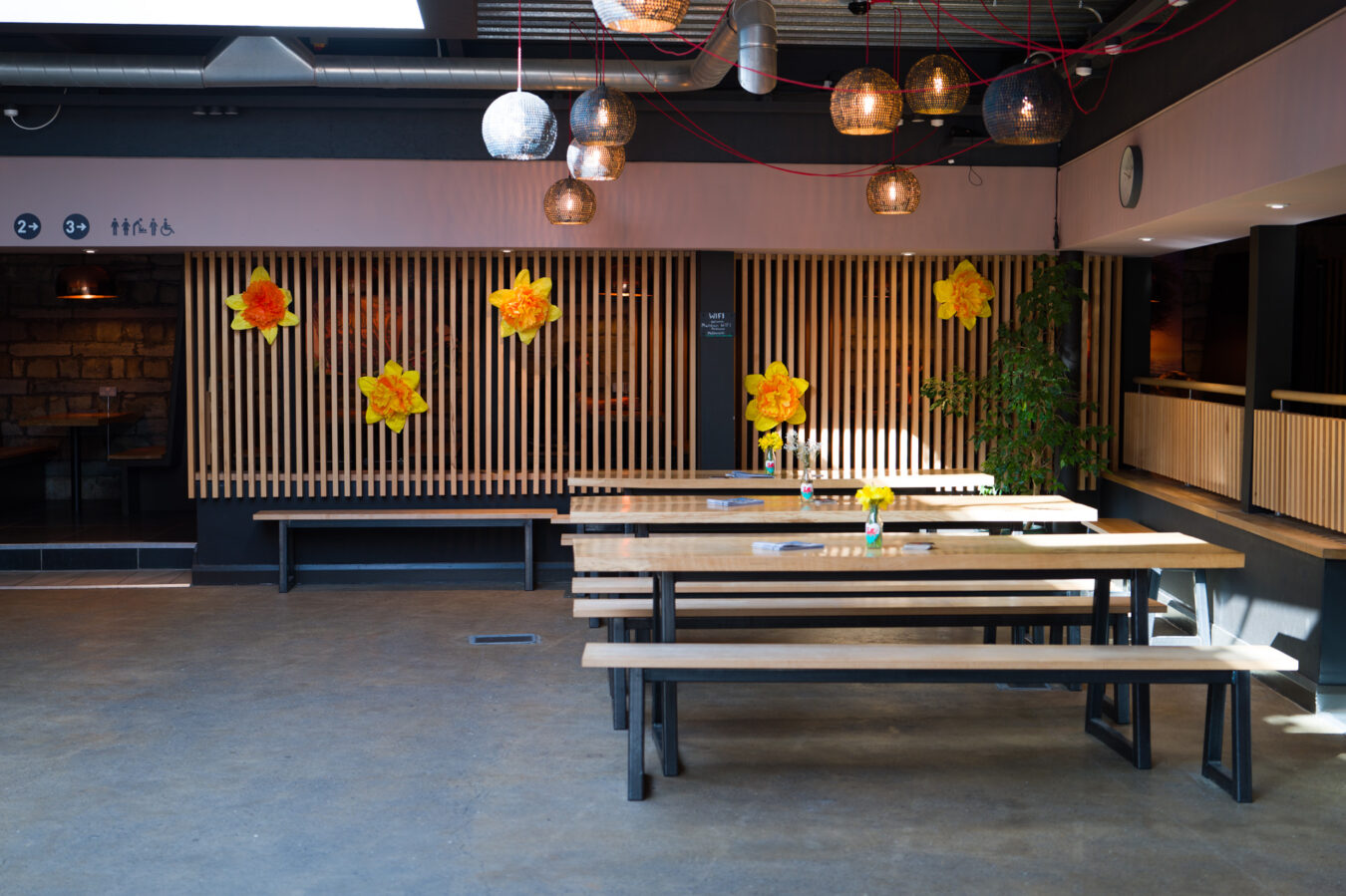
Just behind Theatr Mwldan is Theatr Byd Bach (Small World Theatre), home to the puppet theatre company of the same name. Although the company focuses mainly on education and outdoor events, there are also shows you can see at their headquarters. The building itself is unique in design, featuring a near-zero carbon footprint and fully accessible facilities. Check their website.
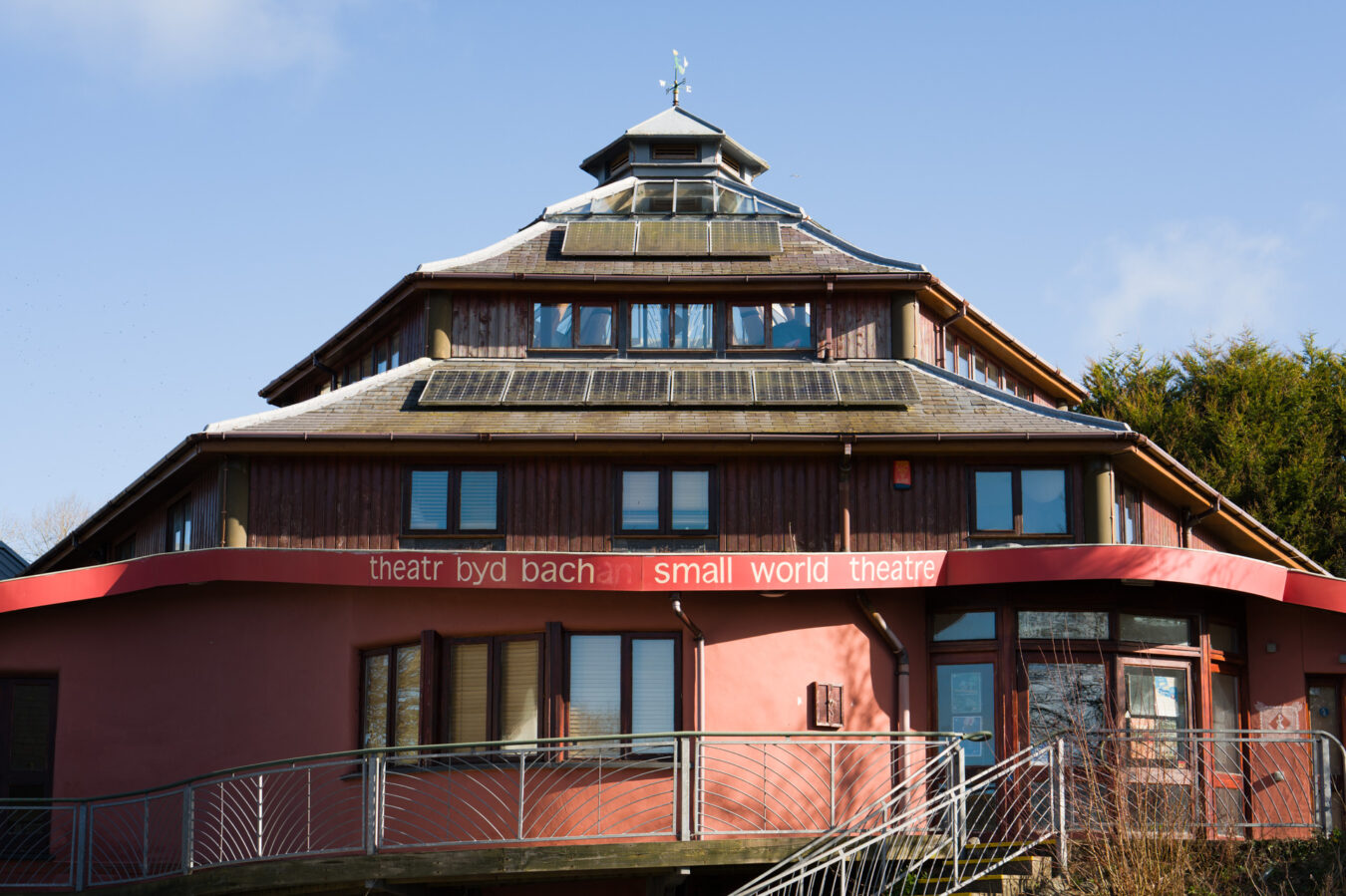
3. Canoe Along The Teifi River
Although Cardigan does not sit directly by the sea, the River Teifi offers plenty of opportunities for outdoor activities. You can walk south to Cilgerran Castle, north-west to Poppit Sands, or north-east to Mwnt, depending on which side of the bank you walk on.
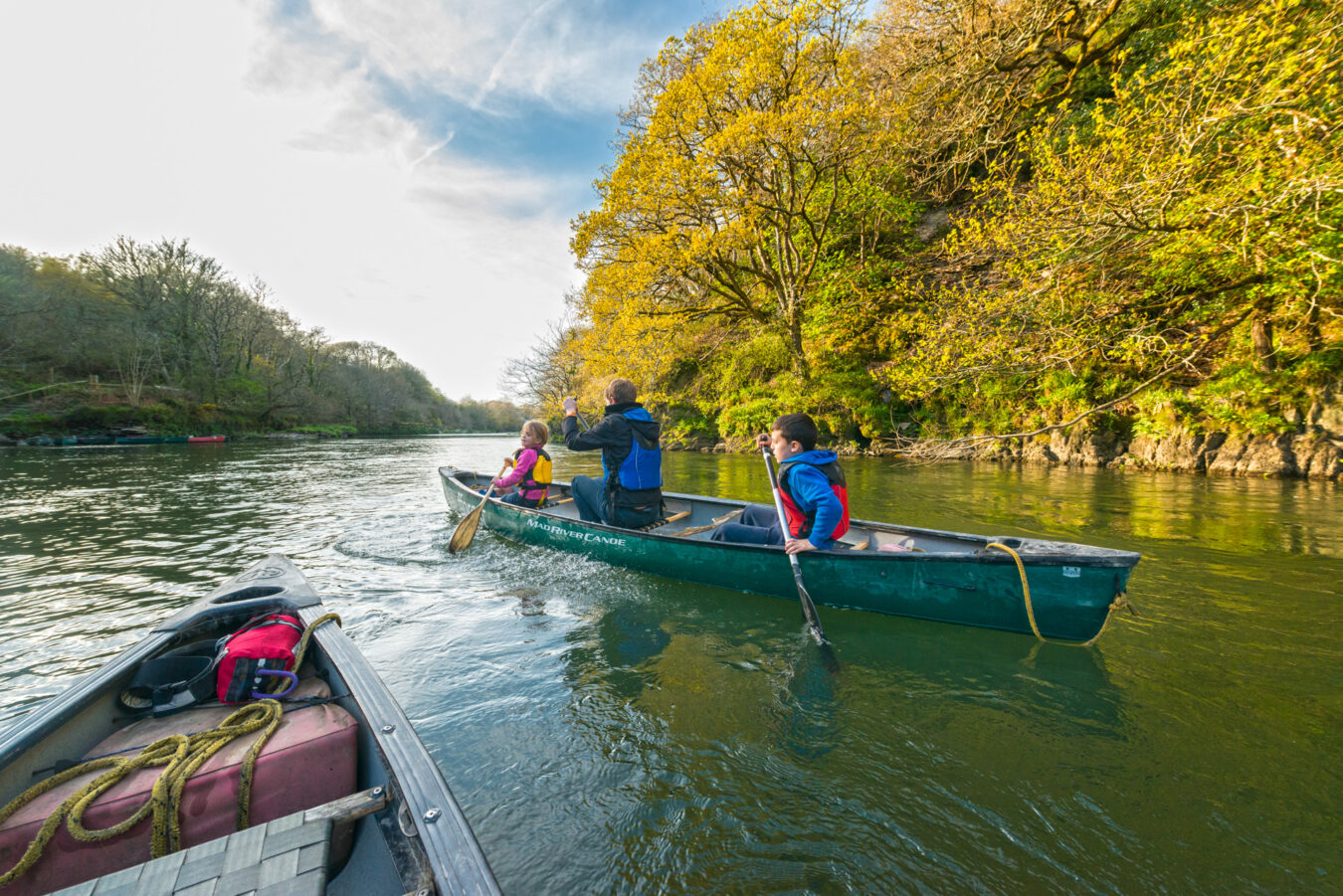
If you are looking for water activities, canoeing or paddling along the river is definitely one to shortlist. The river features some of the most breathtaking stretches in Wales, and the Teifi Gorge is one of the finest examples of a tidal gorge in the country, offering a safe and inspiring journey for the whole family.
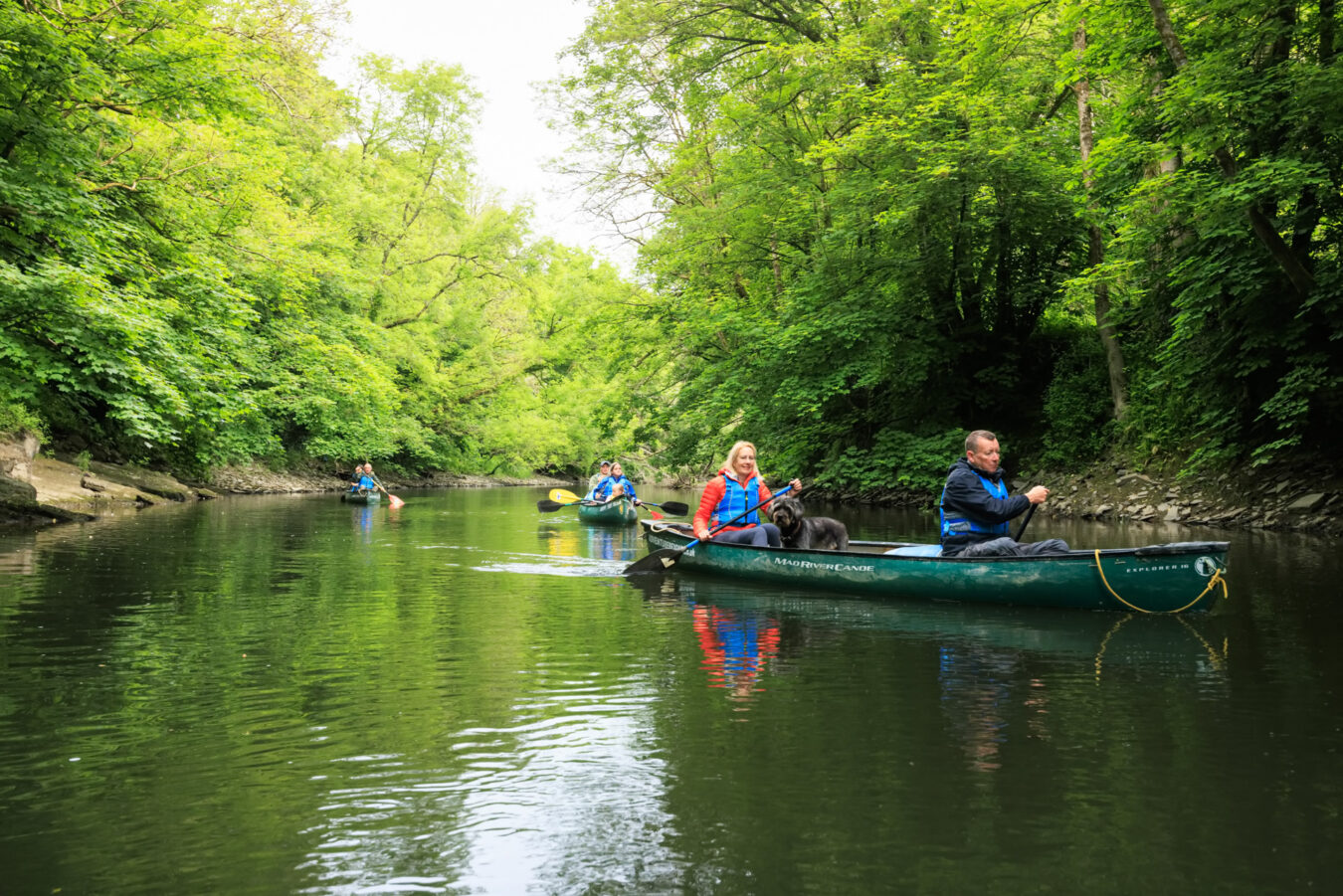
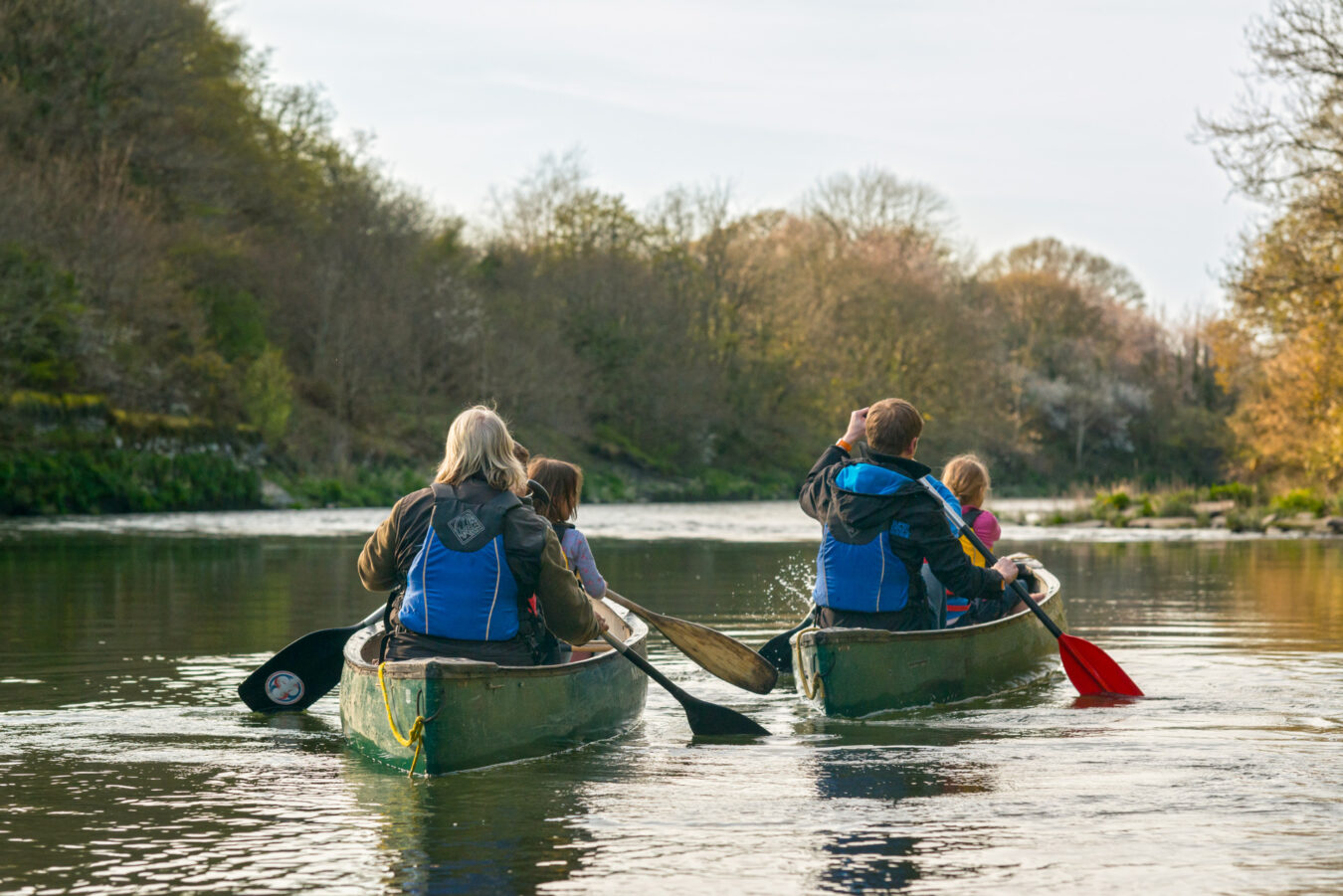
Several companies offer guided activities, including Adventure Beyond and Heritage Canoes.
4. Explore St Dogmaels Abbey
St Dogmaels Abbey is a Grade II listed site maintained by Cadw. It sits in the riverside village of the same name, just a four-minute drive from Cardigan Castle. Bus number 408 takes you there from Cardigan.

Although only ruins remain today, the abbey was once an important religious centre that remained active for over four centuries. It was founded in 1120, dissolved in 1536, and later became privately owned. Large parts of the complex were destroyed or altered in the years that followed.
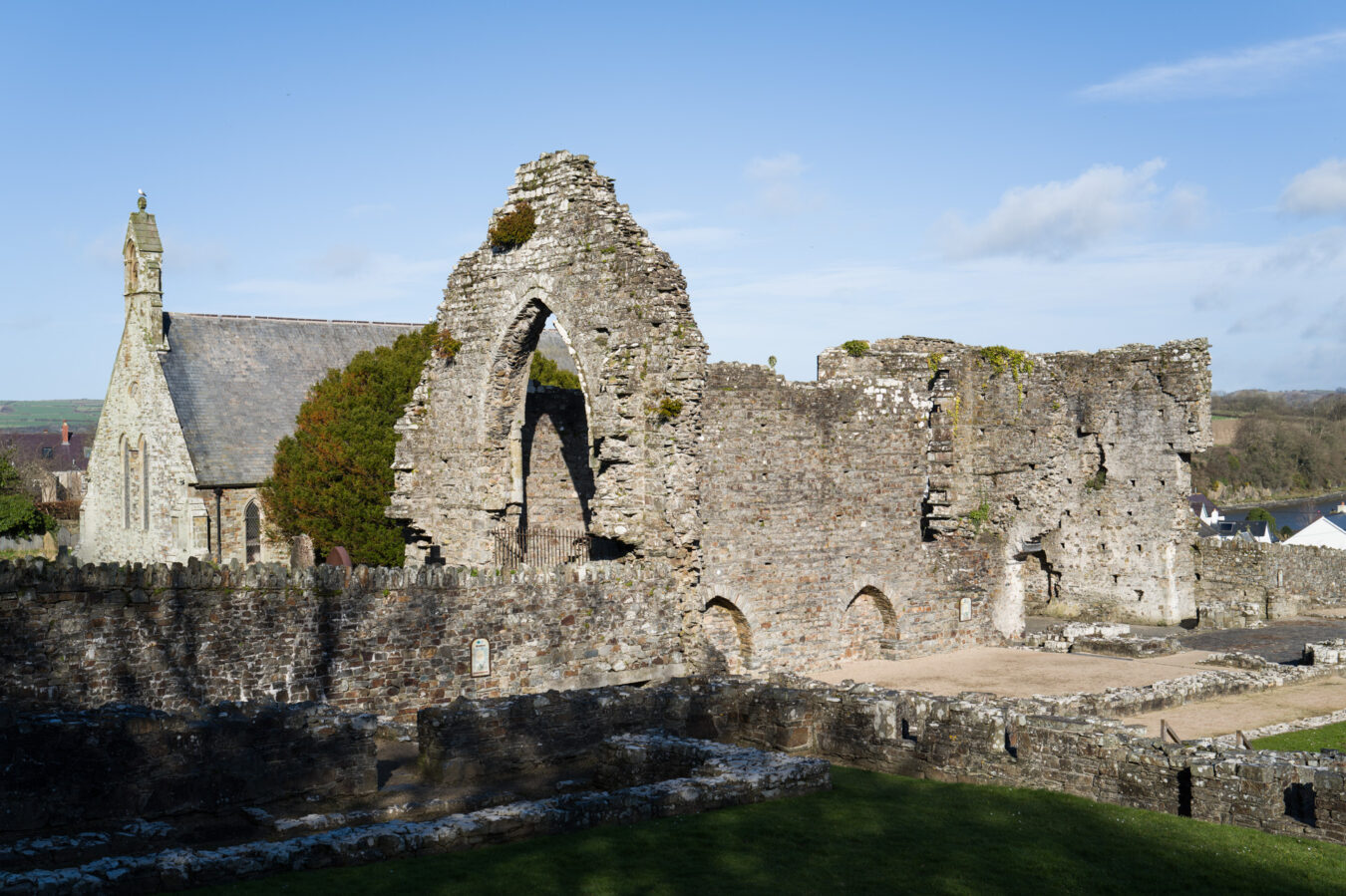

Just next to the ruins is the restored Coach House, which features a museum, visitor centre, shop, and café.
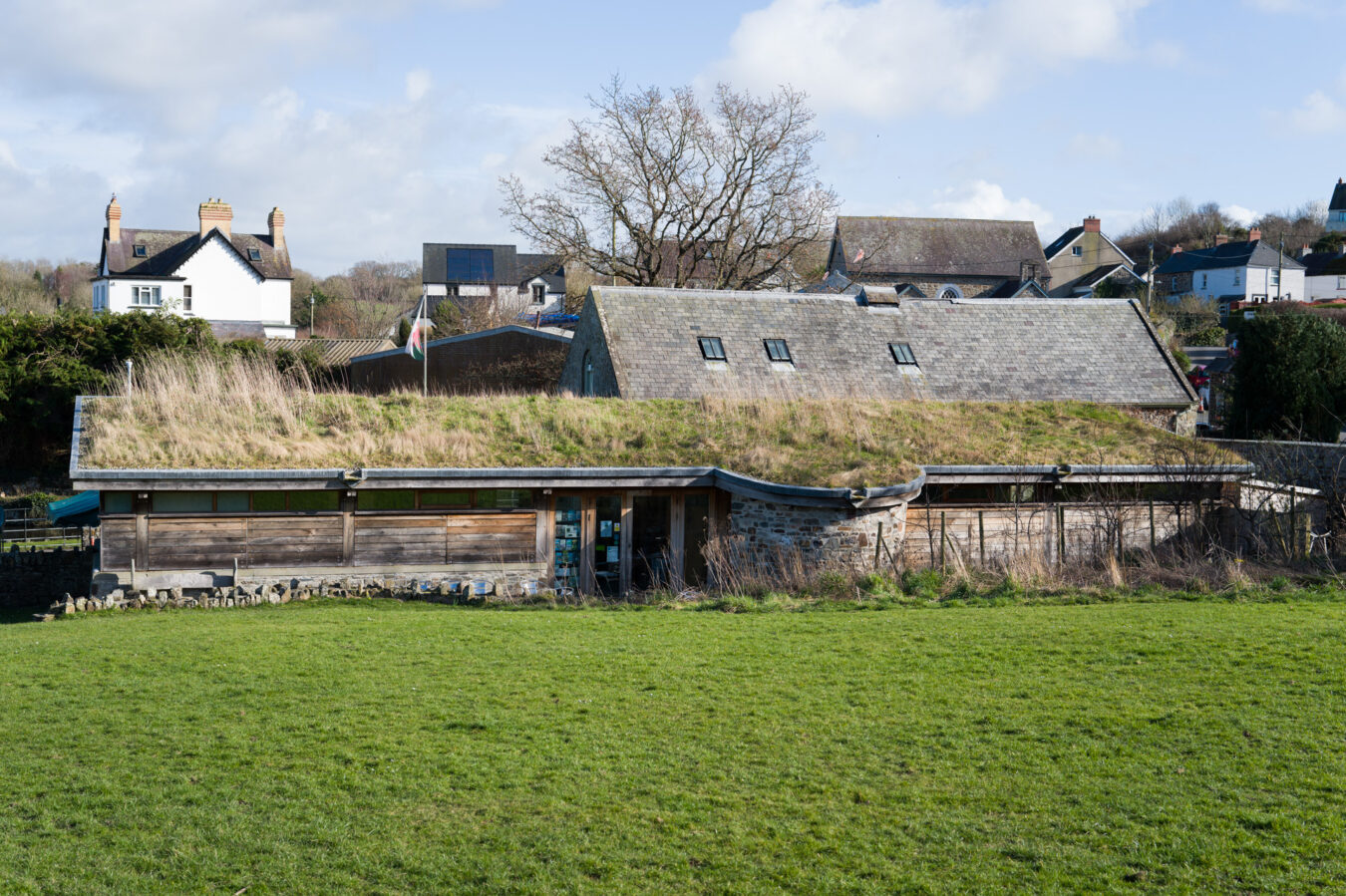
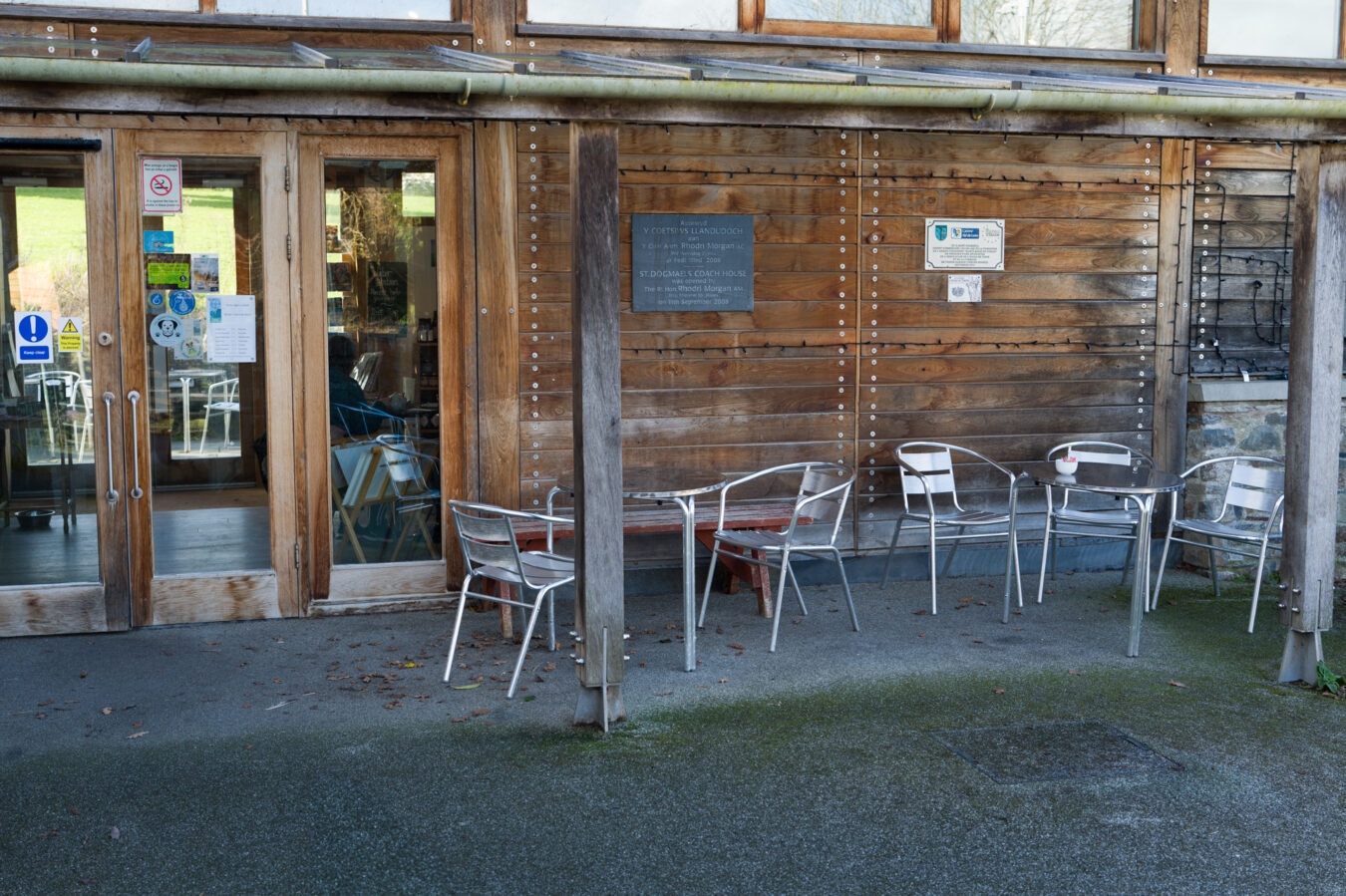
The Pembrokeshire Coast Path also starts in St Dogmaels, leading to our next chapter.
Y FELIN – A GEM NOT TO MISS
Adjacent to the abbey, you’ll find Y Felin, the last working watermill in Wales that still produces traditional stoneground flour, among other products. Guided tours are available, allowing you to see the miller at work. (Adults: £8 – Children: £4 – Family ticket: £20). Note that tours are by appointment only. More info and how to book on Y Felin website.
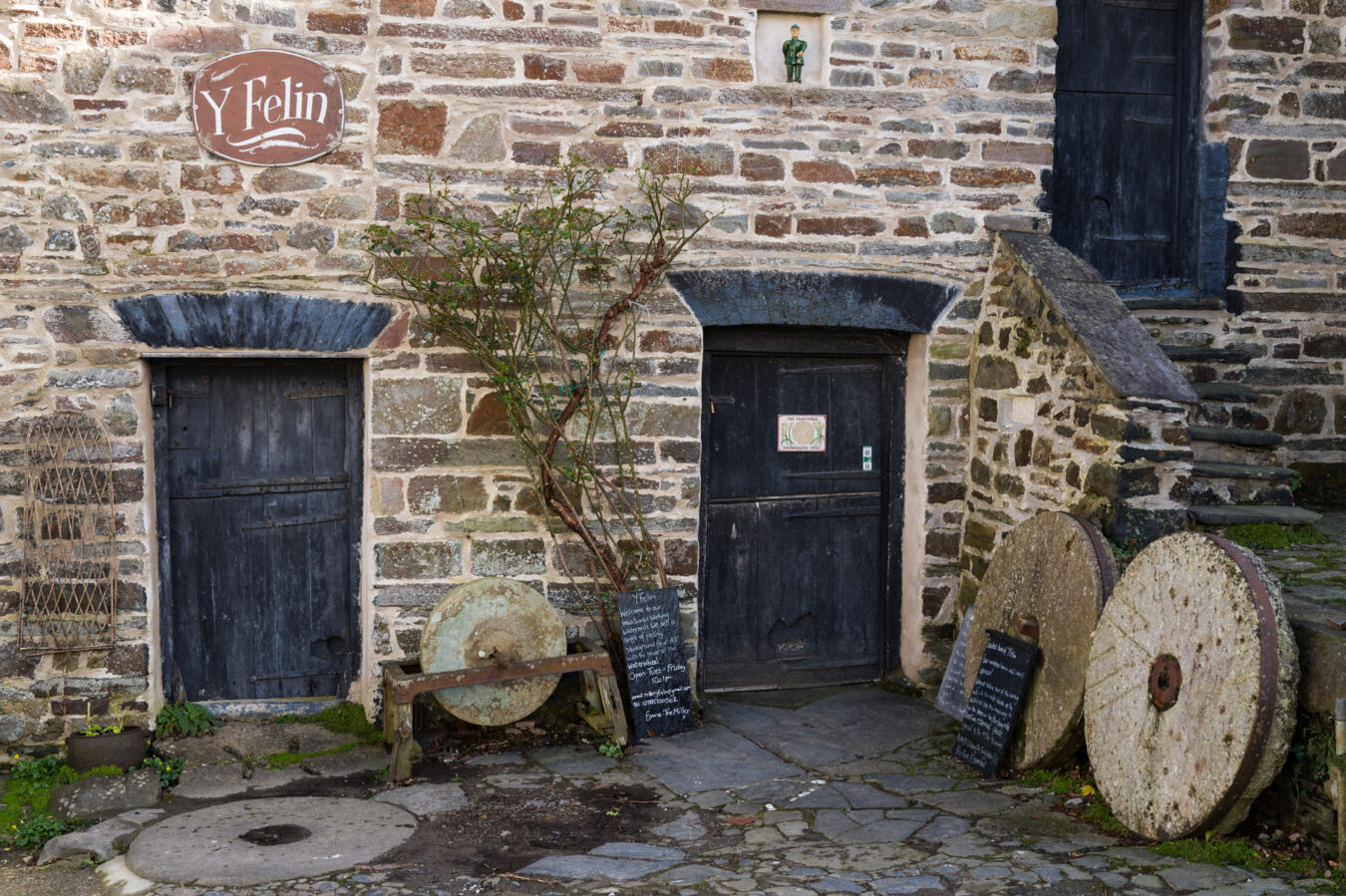
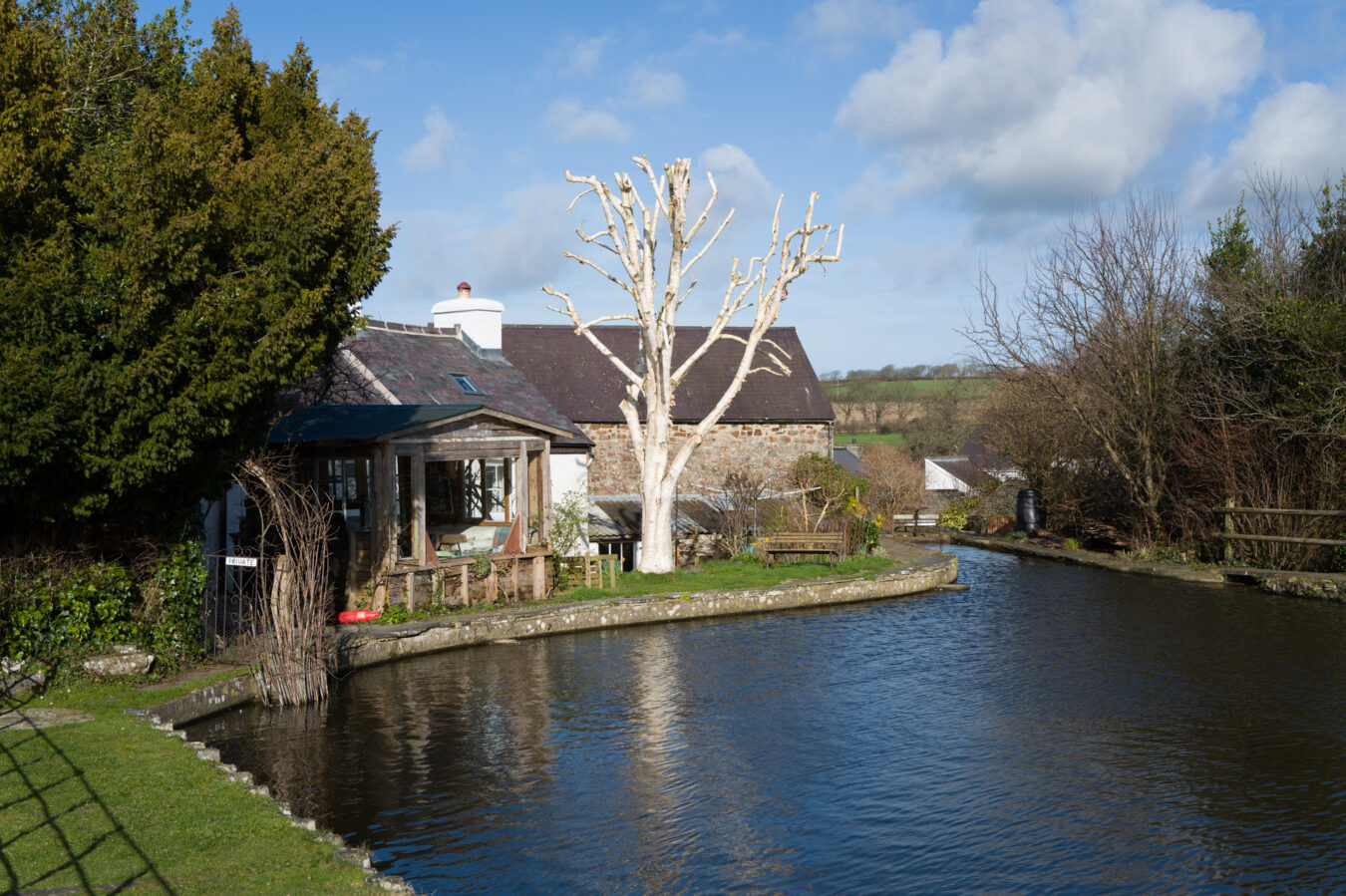
5. Visit Poppit Sands
Poppit Sands is a large, sandy beach backed by dunes, just a 10-minute drive from Cardigan (or take bus 408). Because it faces north, the beach is sheltered from south-westerly winds and is a popular destination for watersports such as windsurfing, kayaking, and surfing. It is also a great spot for observing wildlife, including bottlenose dolphins, porpoises, and Atlantic grey seals in the summer.
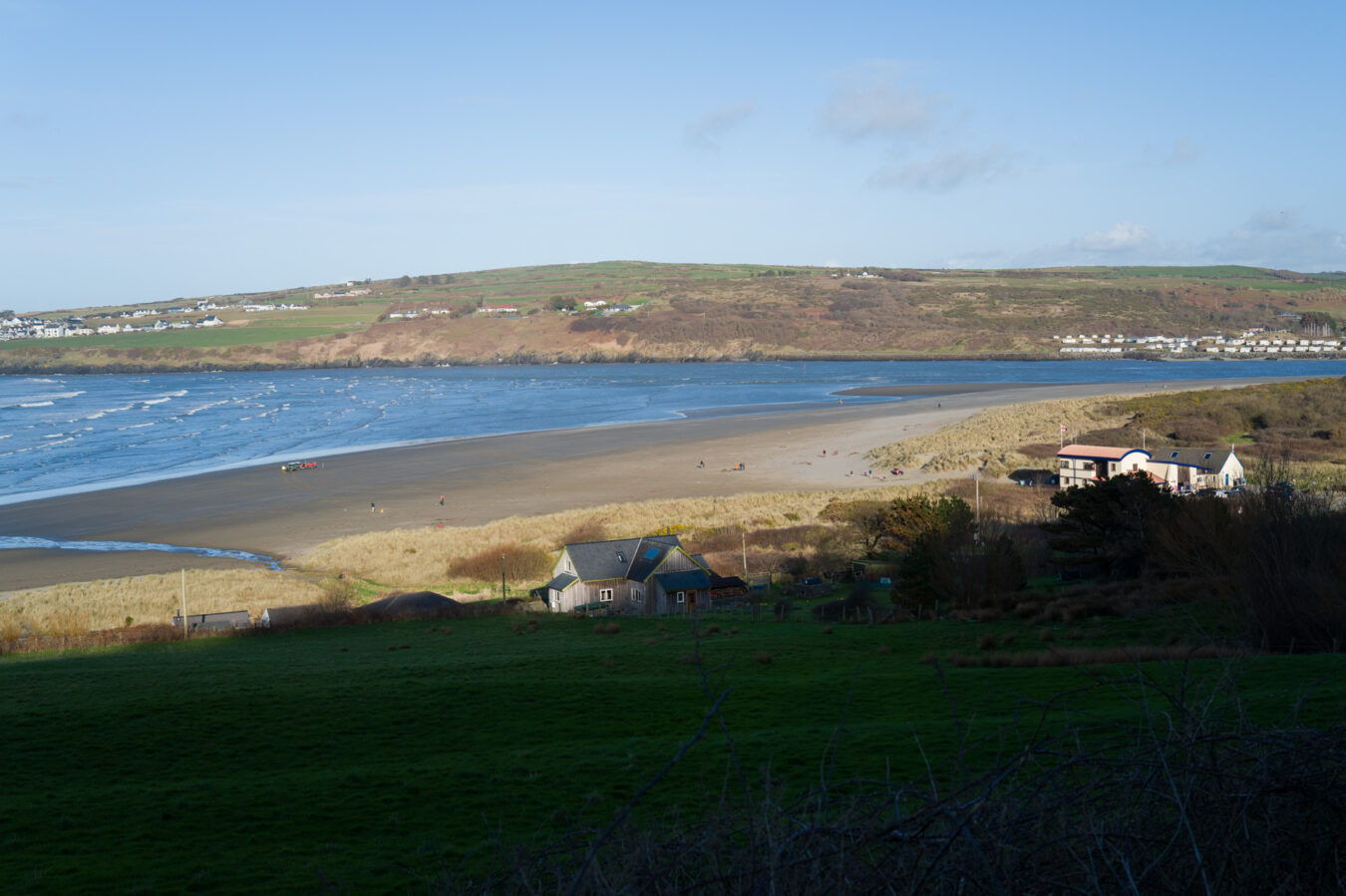
The beach has Blue Flag status, and a lifeguard service is available in the summer. A boardwalk makes it easier for people with limited mobility to access the sand, and a beach wheelchair can be hired online. Dogs are not allowed on the western end of the beach between 1st May and 30th September.
beware of currents and tide
- At low tide, the full extent of the sand makes it look as though you can reach Gwbert on the other side, but do not attempt to cross—the currents are too strong.
- The tide comes in fast, so be sure to check the tide times to avoid getting cut off.
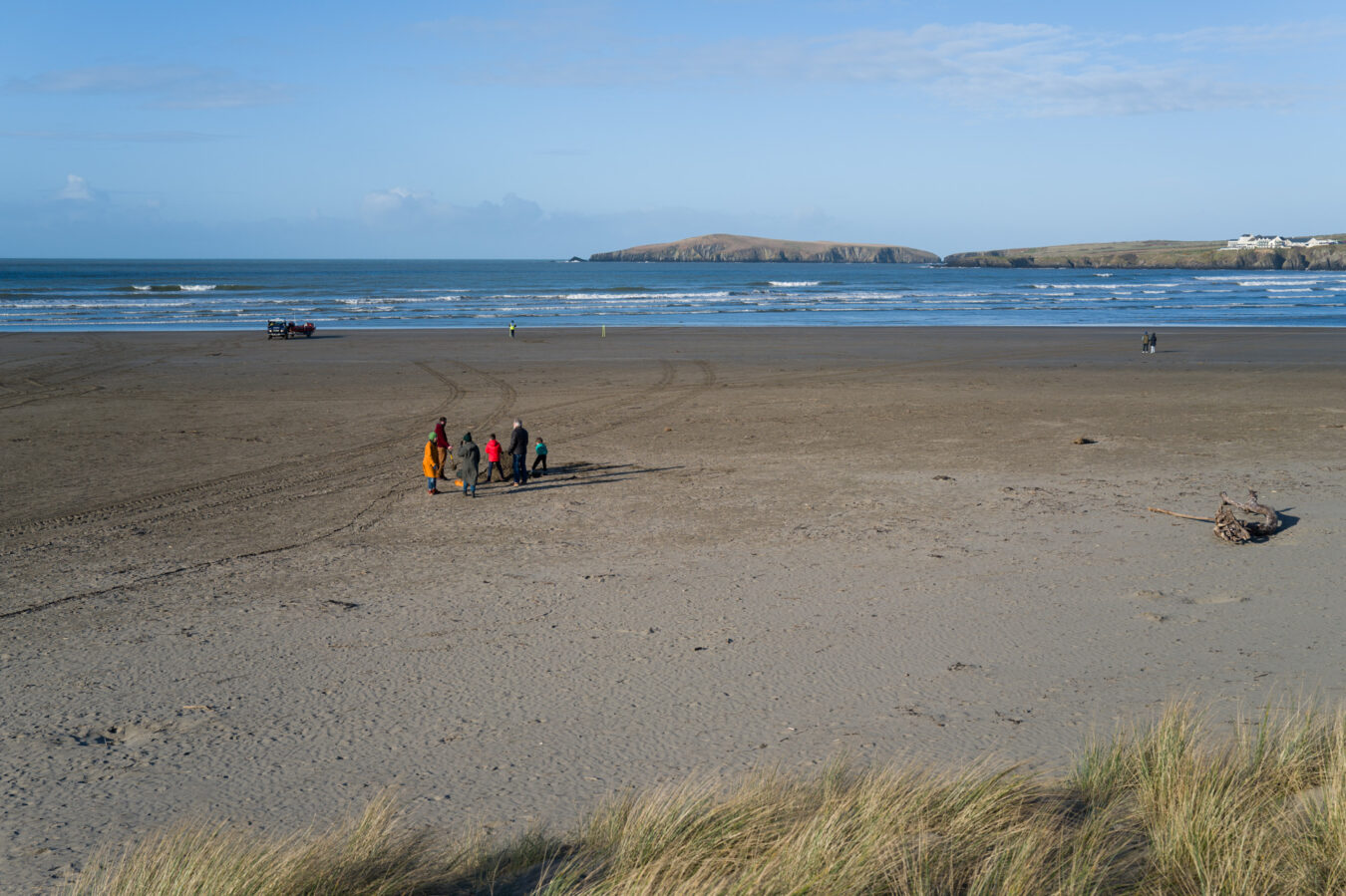
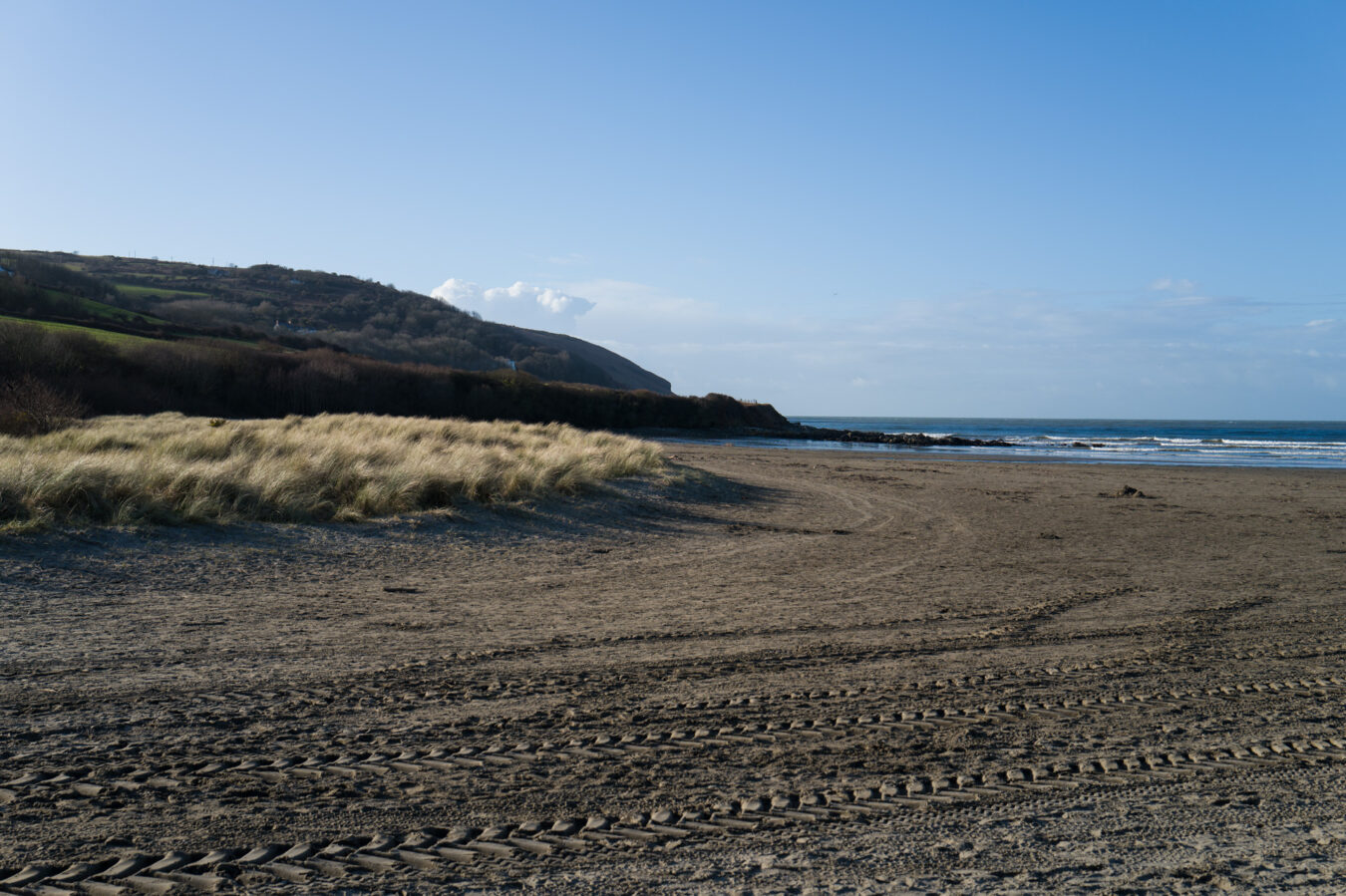
There is a large car park, the Crwst Café, and a lifeboat station. Pubs and restaurants can be found along the road between St Dogmaels and Poppit, and I personally had a lovely meal at the Teifi Waterside Hotel.
CEMAES HEAD
Although the Pembrokeshire Coast Path officially starts at St Dogmaels, many walkers start from Poppit Sands. It’s well worth the effort to walk a bit further north to Cemaes Head and take in the dramatic cliffs—a journey of about an hour and a half. You will find a map near the entrance to the beach, showing you the trail to follow. Check out the map.
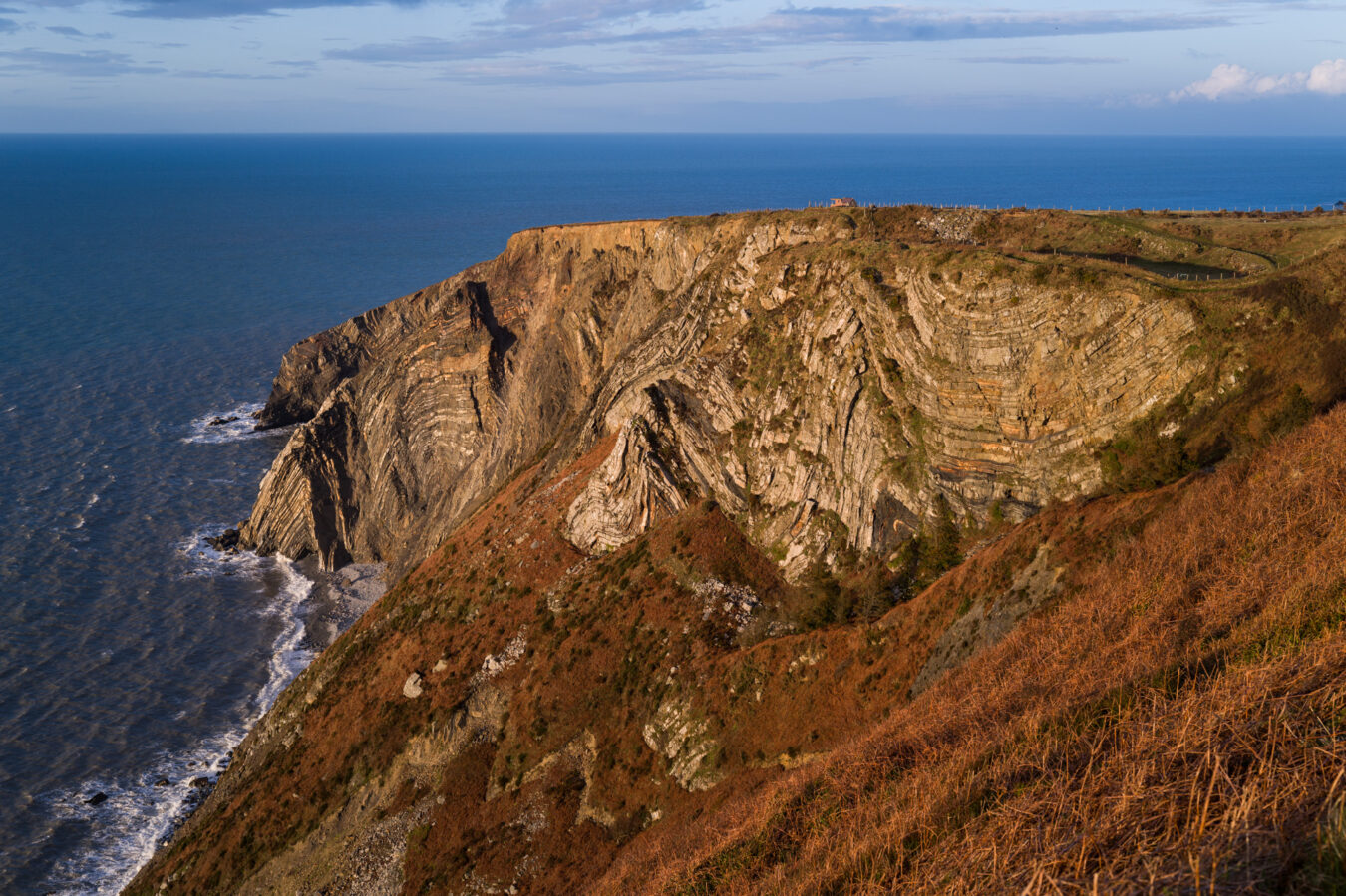
6. Walk To The Welsh Wildlife Centre (Teifi Marshes)
Teifi Marshes is one of the best wetland sites in Wales. There are regular sightings of kingfishers, otters, and wading birds. In winter, thousands of starlings gather here, performing a stunning murmuration over the marshes before descending to roost. Water buffalo can also be seen grazing at certain times of the year.
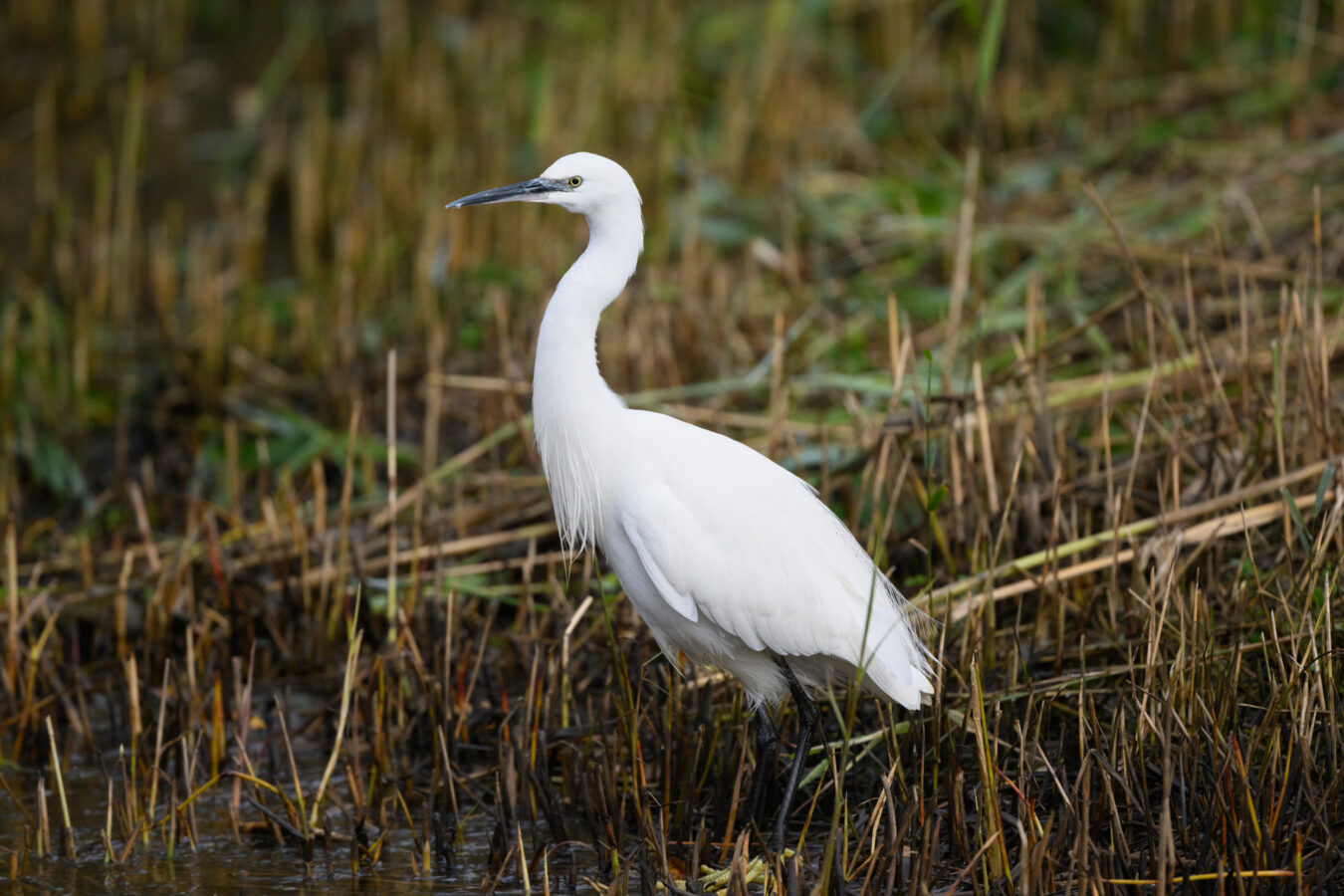
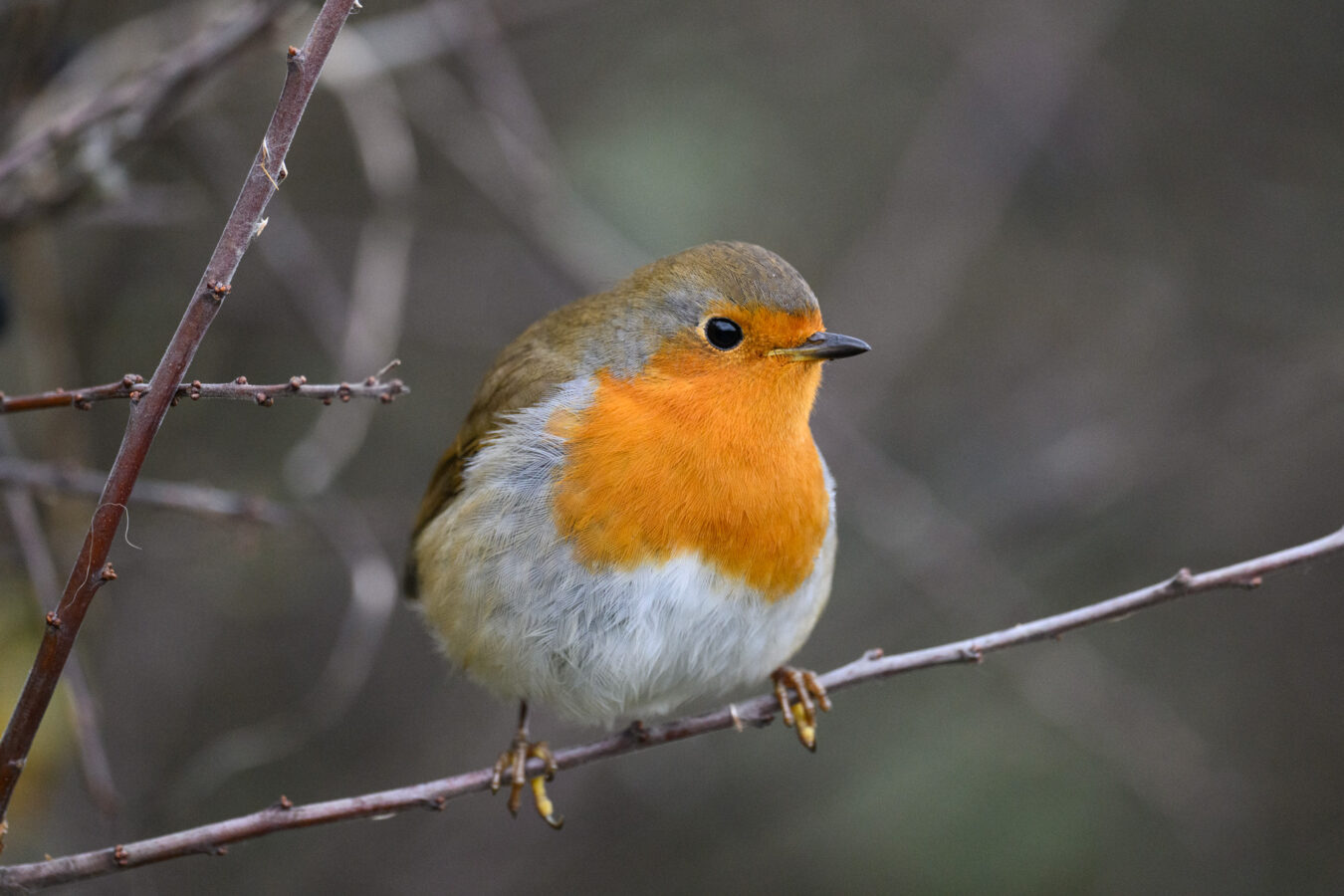
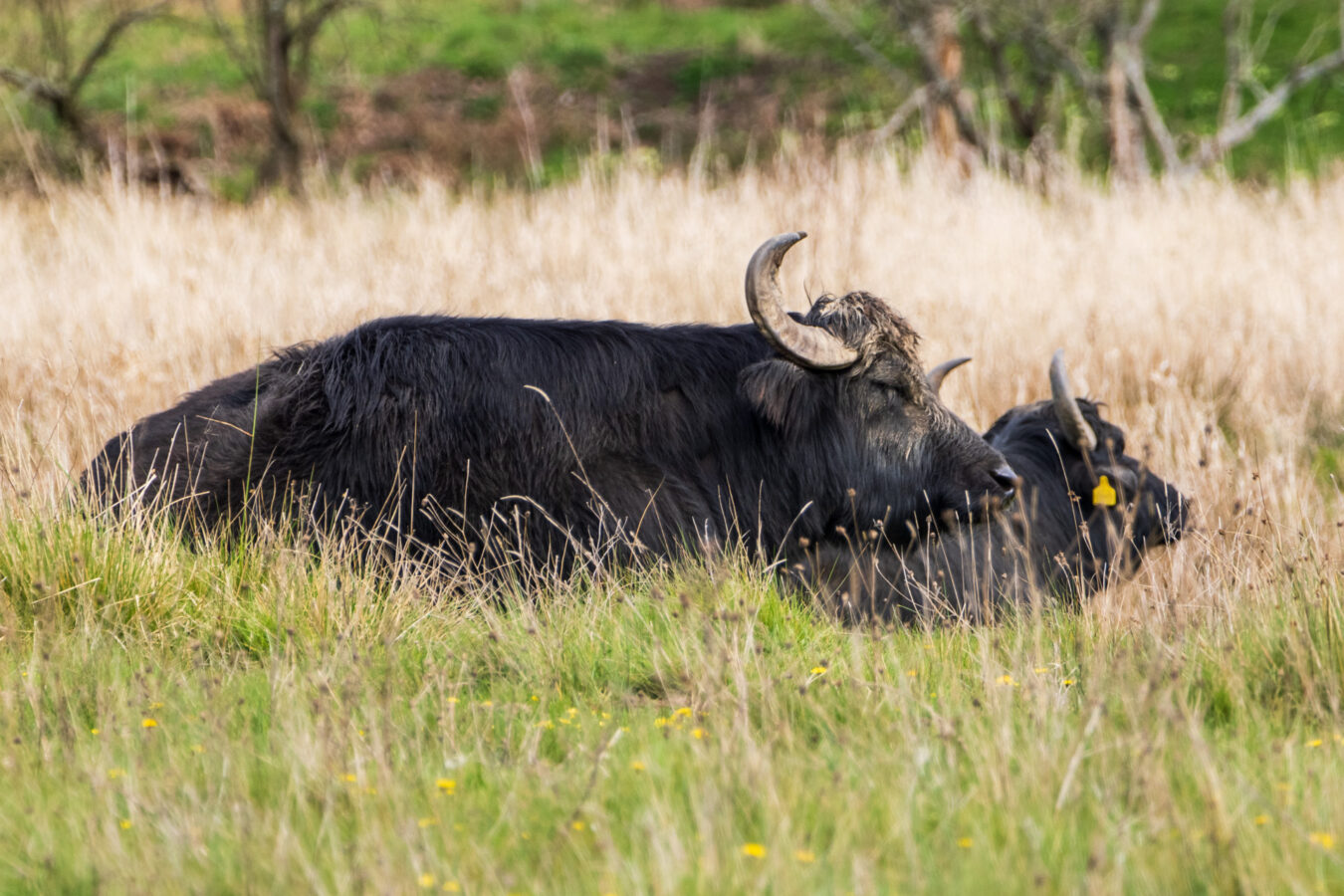
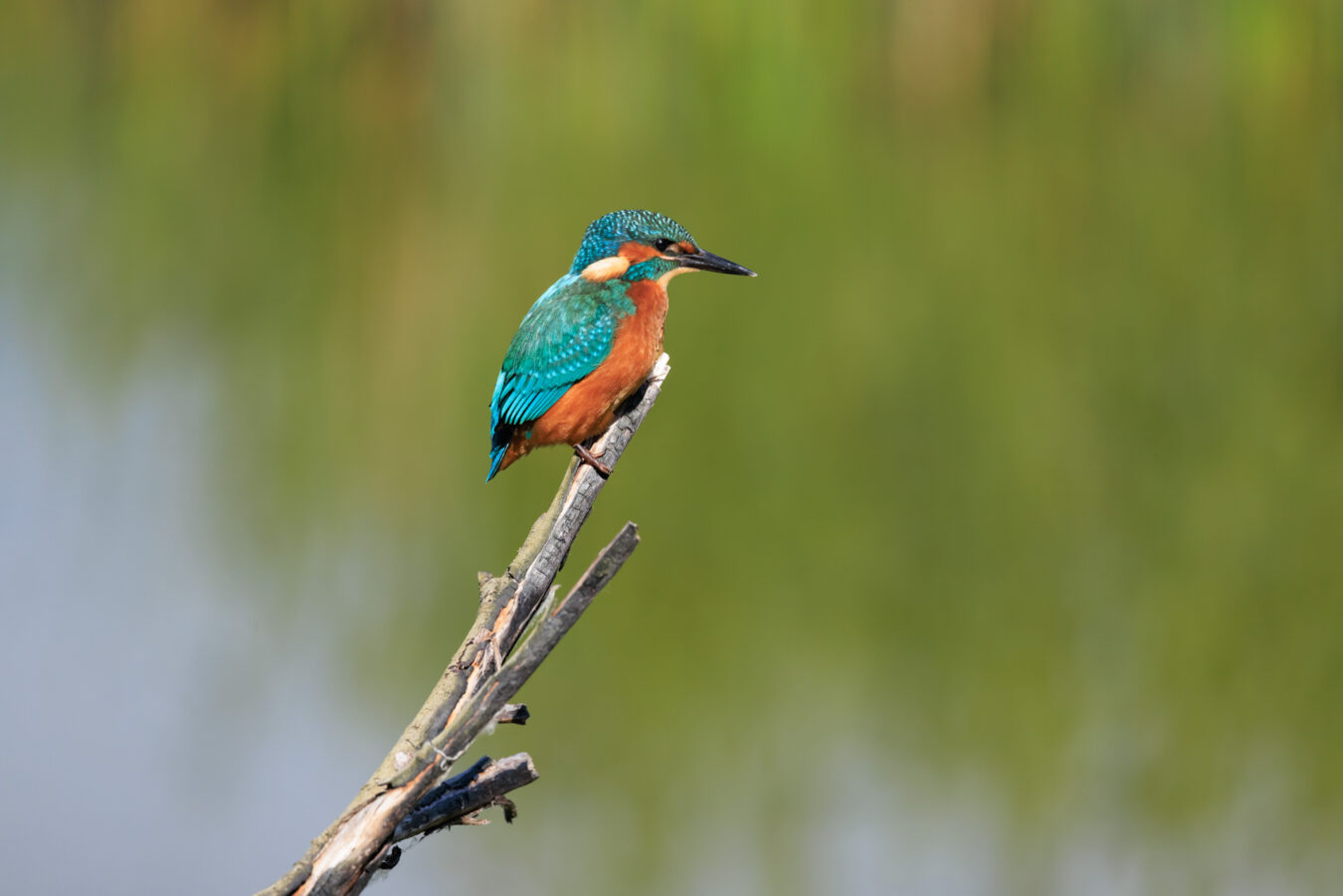
See walking route on
Google Maps
There are various themed nature trails around the reserve, some of which are accessible for wheelchair users. It is a popular spot for patient photographers, with five hides across the reserve, including the Kingfisher Hide.
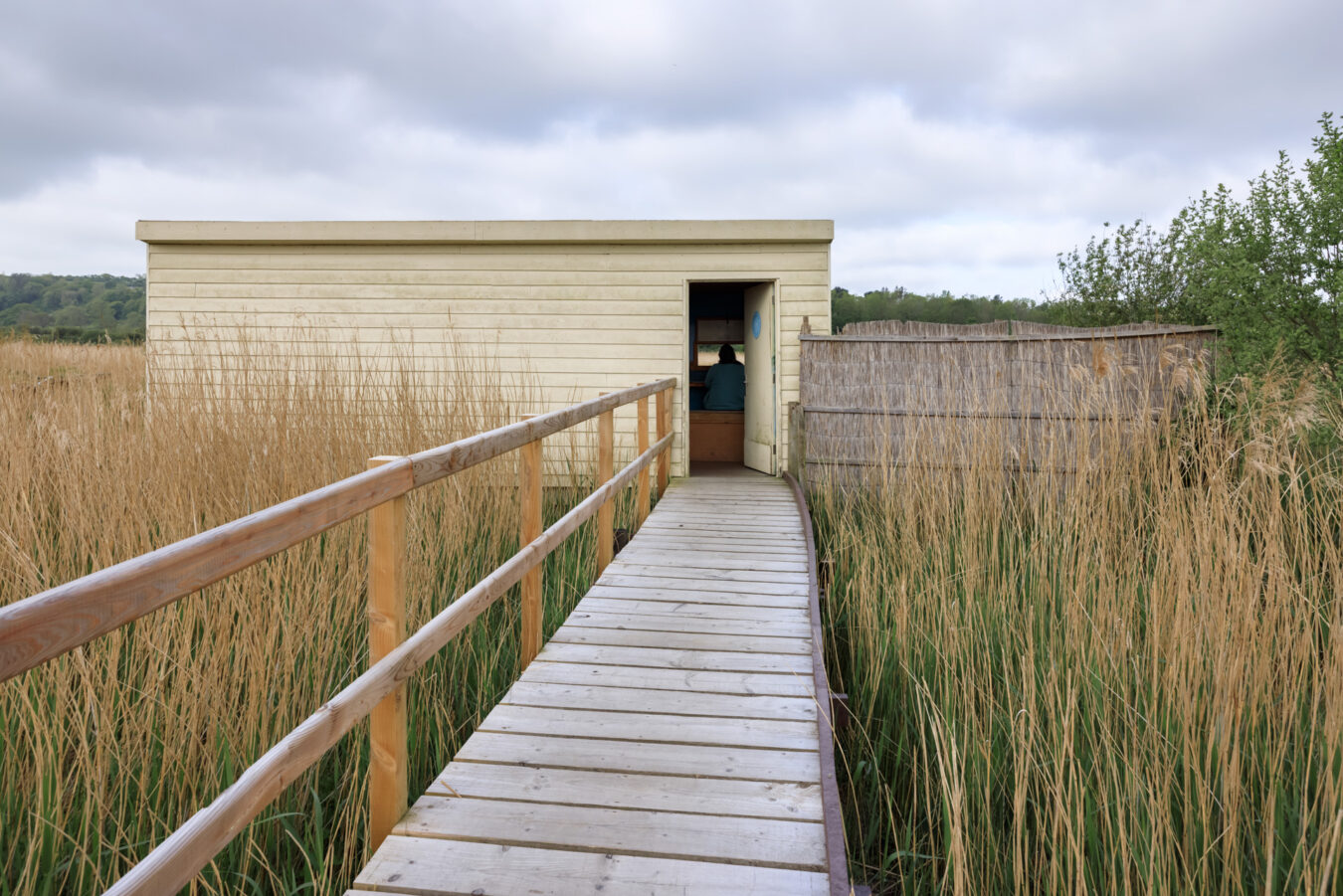
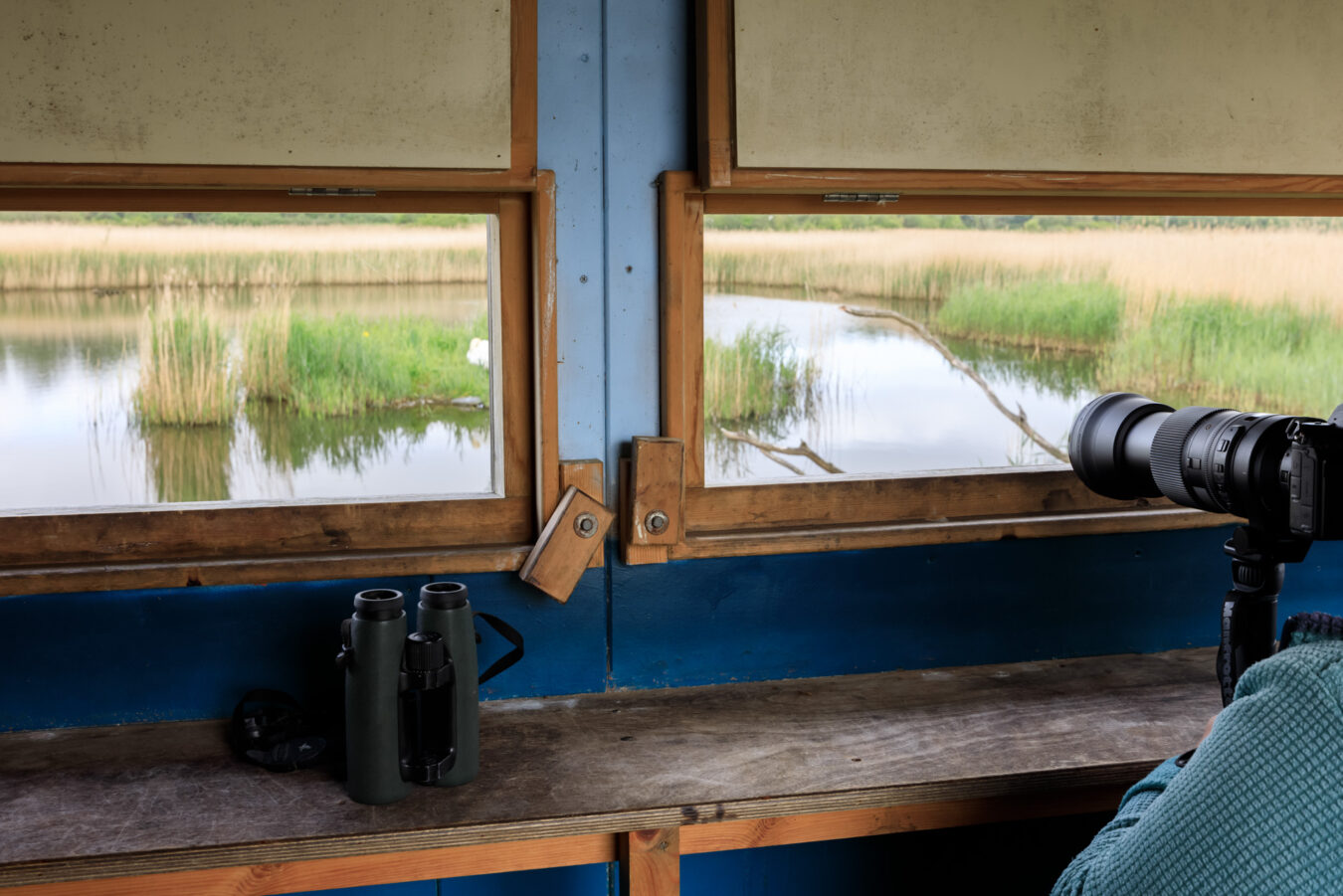
Visitors can also enjoy the Glasshouse Café (open from Wednesday to Sunday), a shop and display room, picnic tables, and an adventure play area. Toilets, including accessible facilities, are available on-site. Parking costs £4 for the entire day.

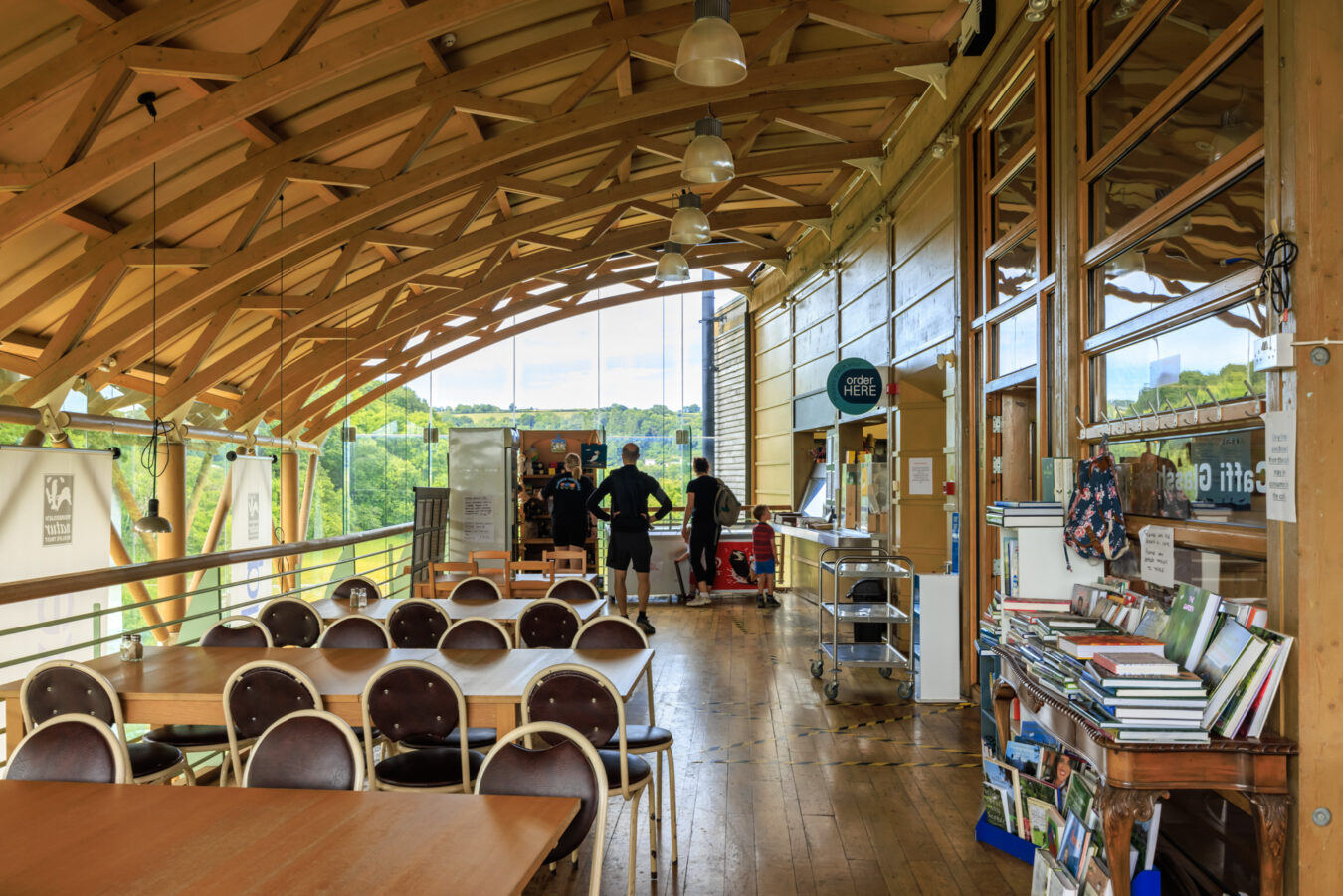
Even more interestingly, you can walk from Cardigan to the nature reserve in about 30 minutes. Canoe hire is also available on-site through Heritage Canoes.
7. Relax On Mwnt Beach
Mwnt is a small hamlet where you’ll find one of the prettiest beaches along Cardigan Bay. Hidden in the crook of a large hill, Traeth-y-Mwnt is a stunning cove with golden sand and substantial waves, where dolphins and seals (including pups!) can often be spotted. The hills surrounding the beach offer even greater views, and on a clear day, you might even see the distant mountains of Eryri (Snowdonia).

Photographer: Aled Llywelyn
Swimming is allowed, but keep in mind there are no lifeguards on site. The walk down to the sand is straightforward, but it involves a steep series of steps, making it unfortunately inaccessible for people with mobility issues.
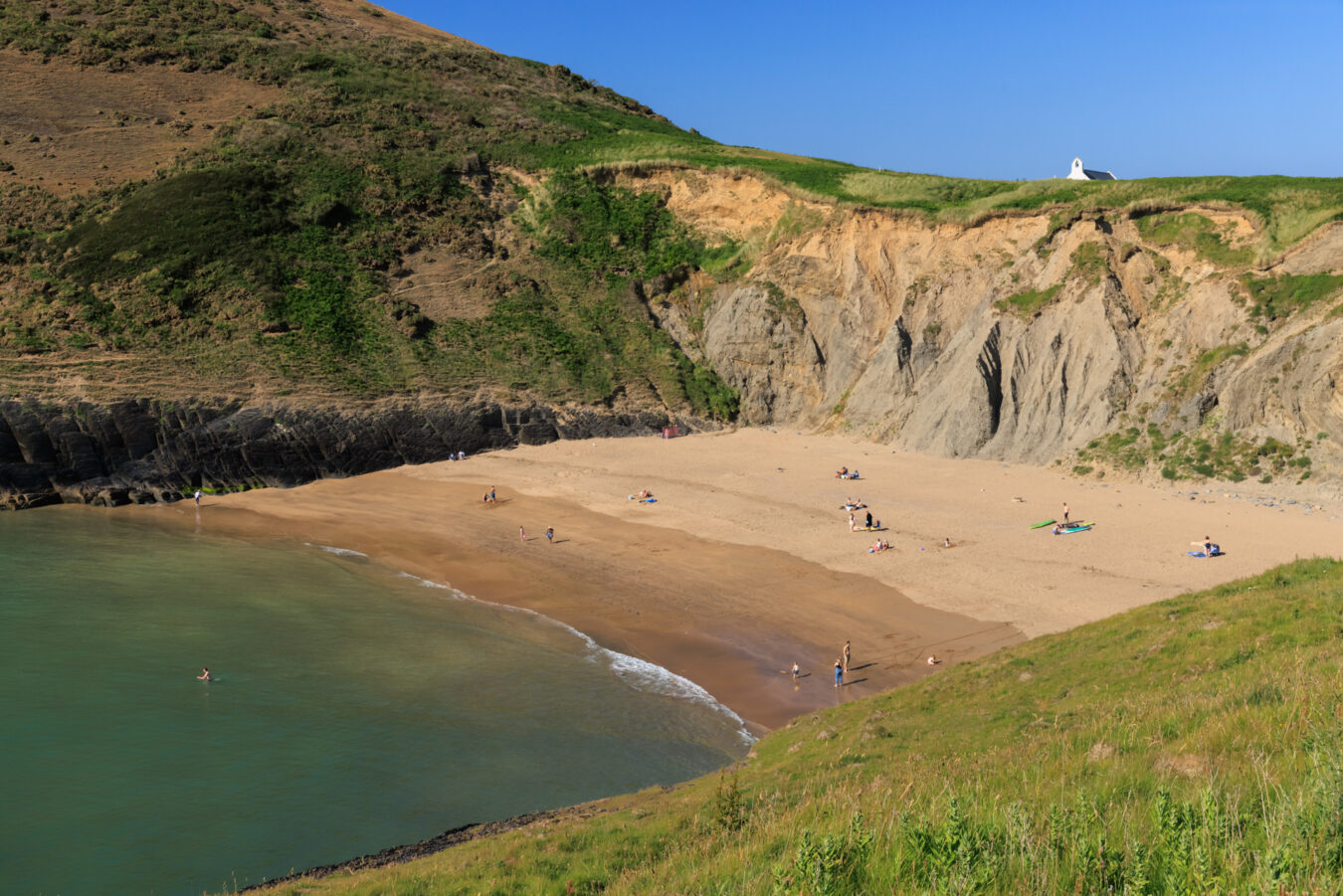
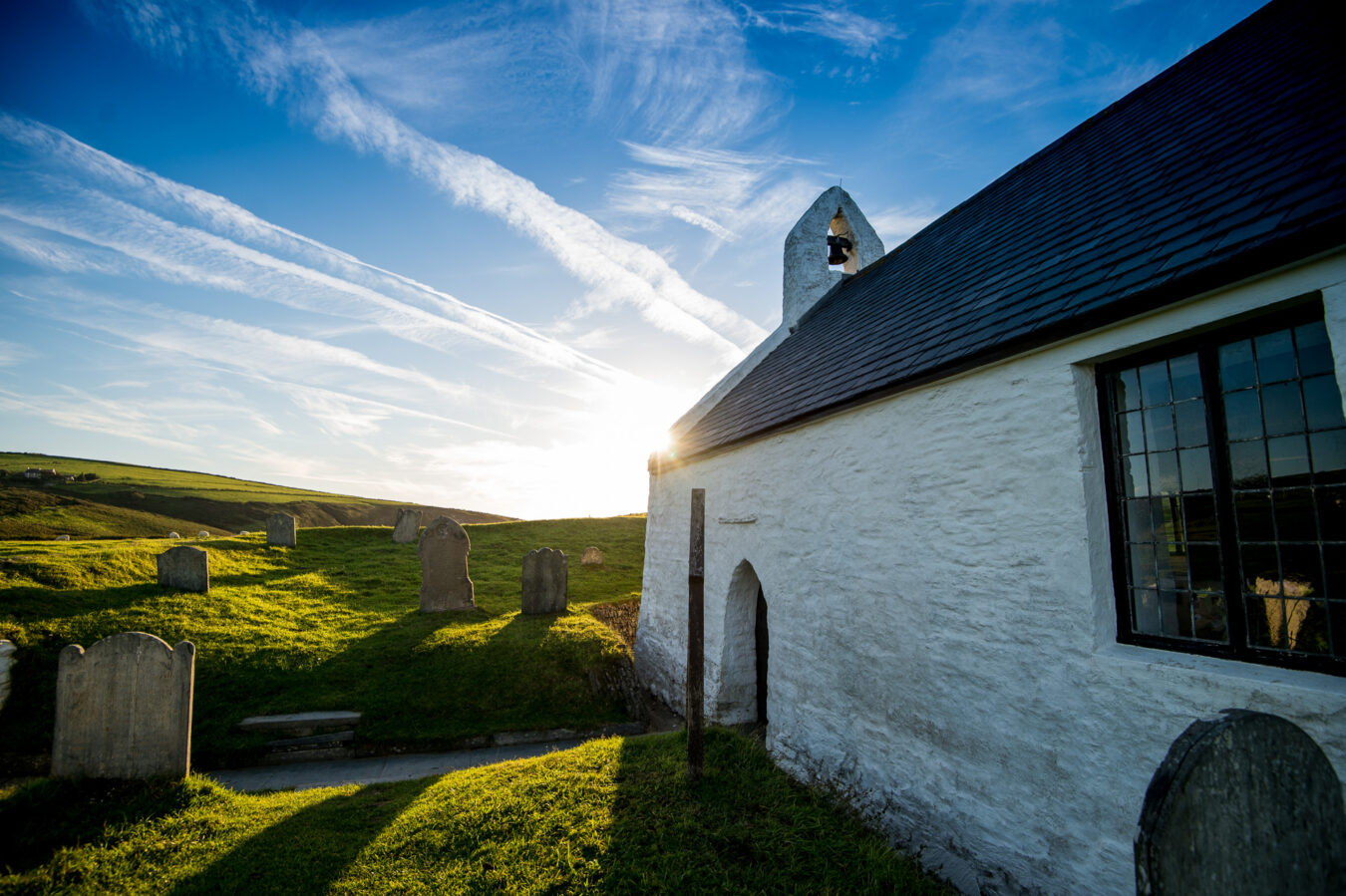
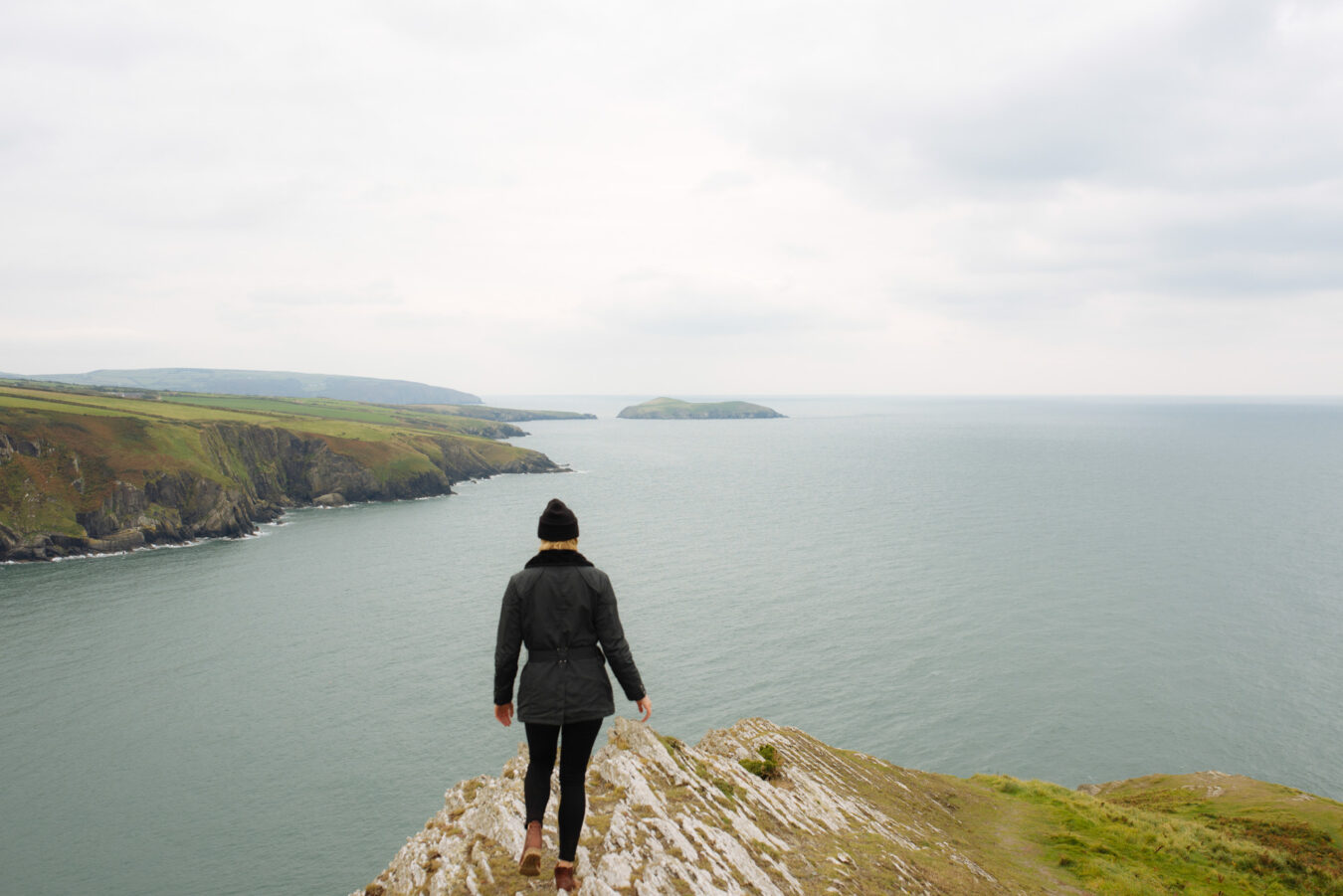
Mwnt is a National Trust site, and parking costs £4 for the day, unless you are a member. There are toilets and a café, usually open from late February to late October. Dogs are only allowed during the off-peak season, from early October to late March.
8. Have Fun at The Cardigan Island Coastal Farm park
The Coastal Farm Park sits north of Cardigan, overlooking the Teifi Estuary to the west and Cardigan Island, which lies just 200 metres offshore to the north. It is a family-owned business, with generations dating back as early as the 1600s.


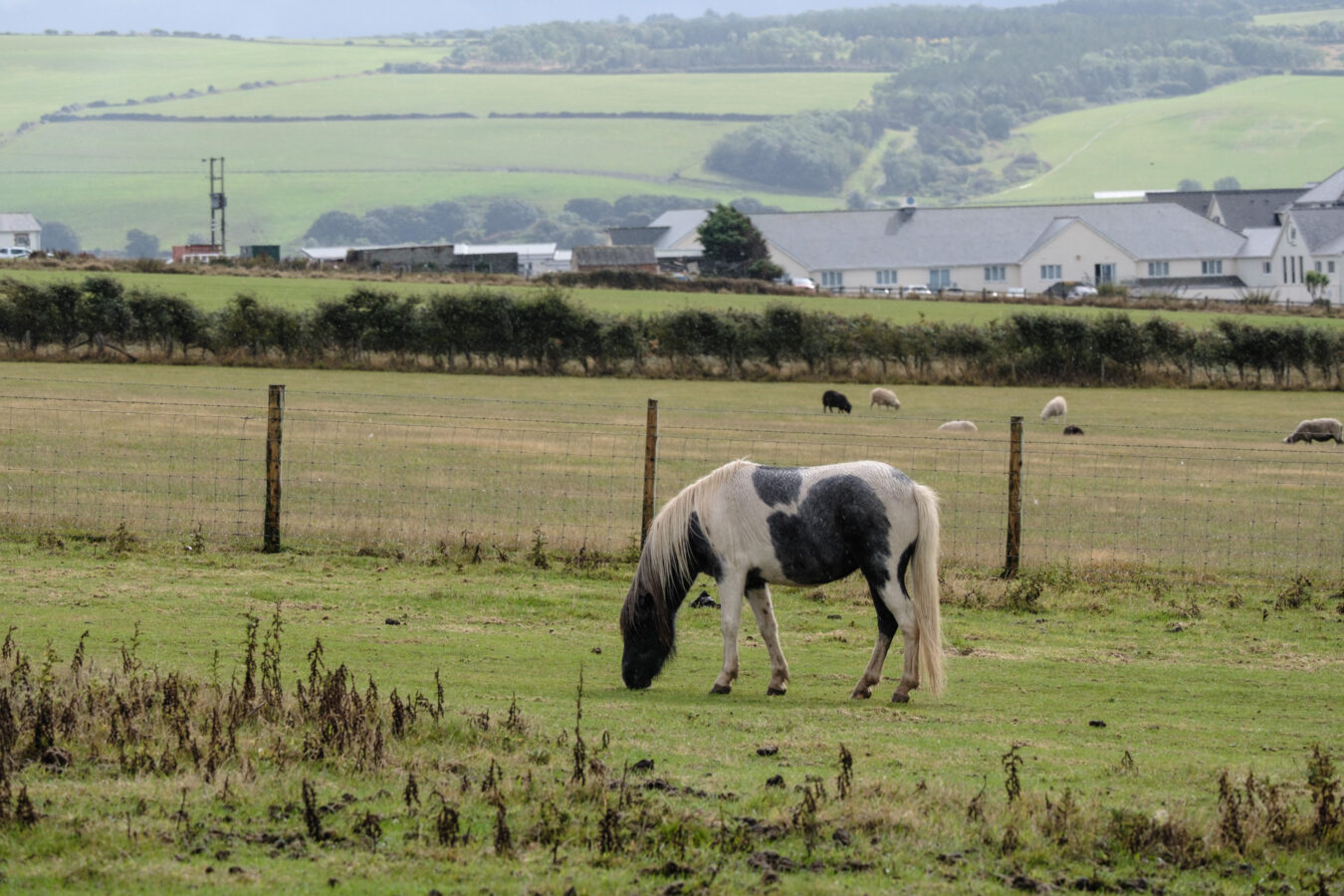
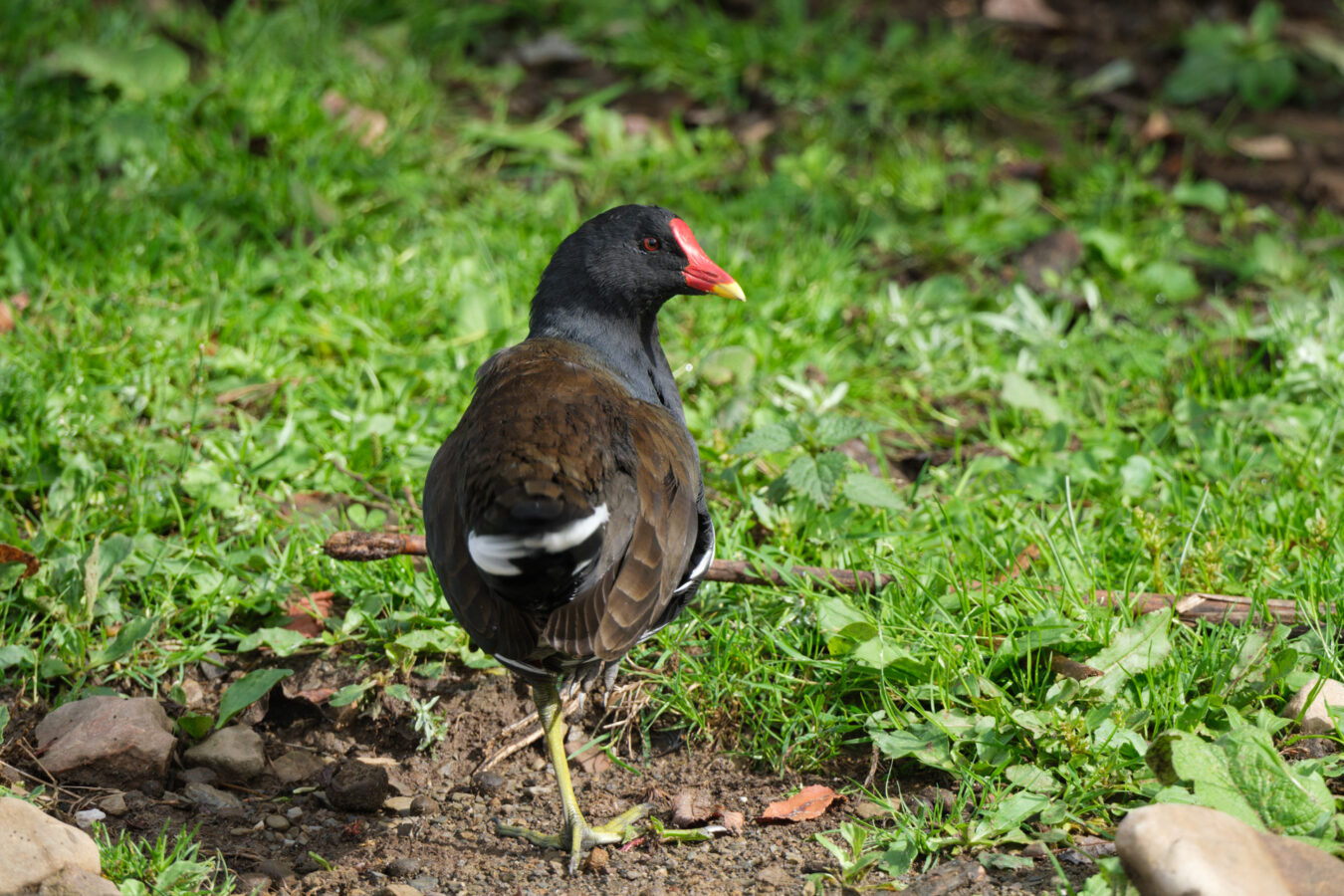
See Cardigan Island Coastal Farm Park on
Google Maps | Apple Maps
The farm is home to a variety of animals, including ponies, goats, llamas, and alpacas. There is a fenced clifftop walk where you might spot seals—they breed in the caves below the cliffs—or even dolphins. You’ll also find a café, gift shop, and indoor and outdoor play areas for children. Additionally, there is a campsite where visitors can stay.
The farm is open from late March to early November. Entry is £5.90 for adults and £4.90 for children.
9. Discover Cilgerran Castle
The castle, perched high on a rocky promontory overlooking the deep gorge of the River Teifi, has inspired many artists over the years. This 12th-century fortress is believed to have been built around 1108 under the orders of a Norman lord. Its prime location, protected on three sides by the River Teifi and River Plysgog, was a powerful symbol of Norman rule.
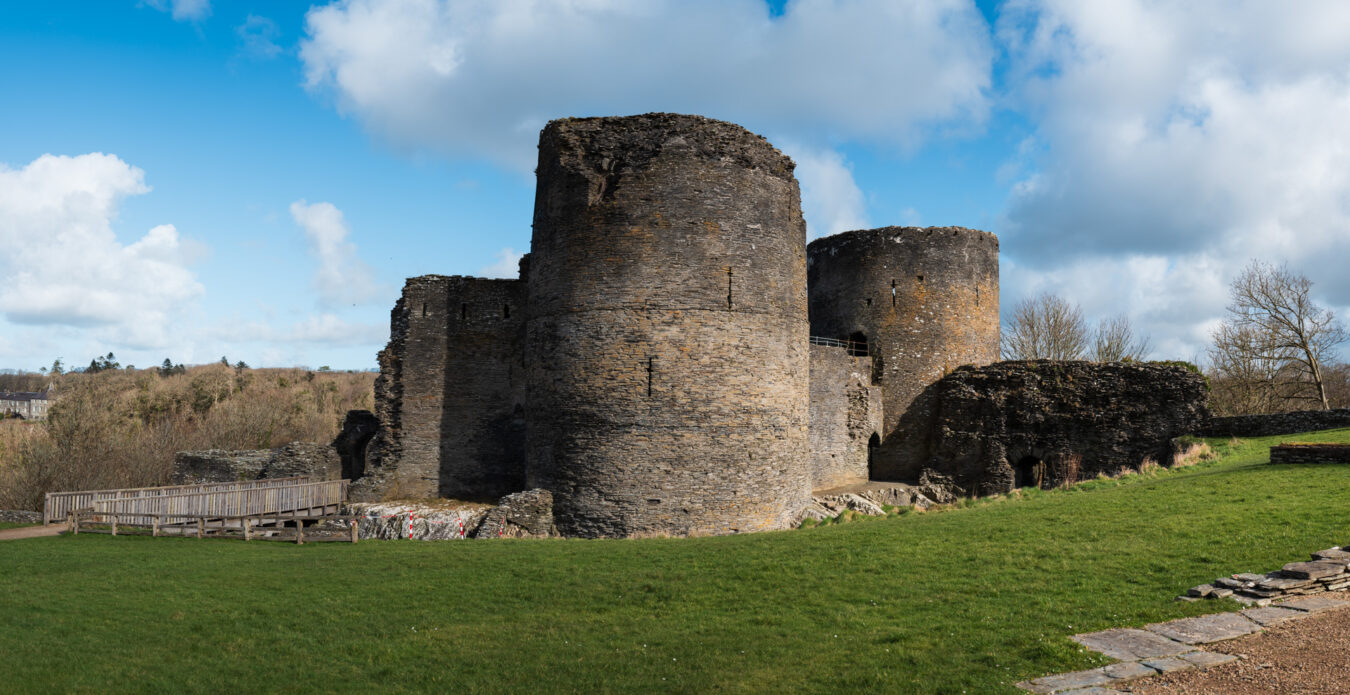
The castle changed hands multiple times. Originally thought to have been just an earth mound topped with a timber fence, it was later redeveloped in stone, with the addition of two towers. Over time, it was further fortified and repaired, including the construction of a third tower.
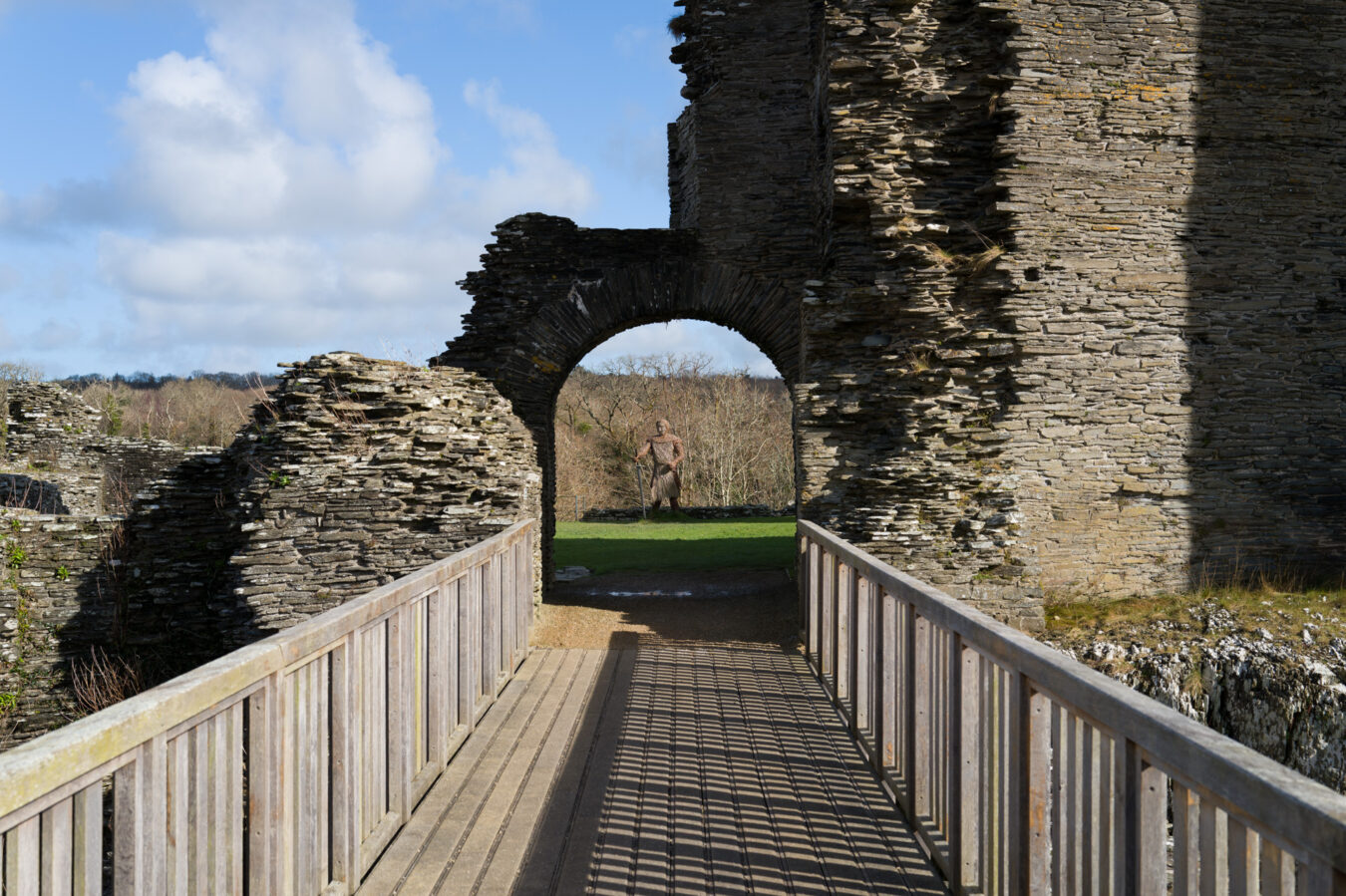
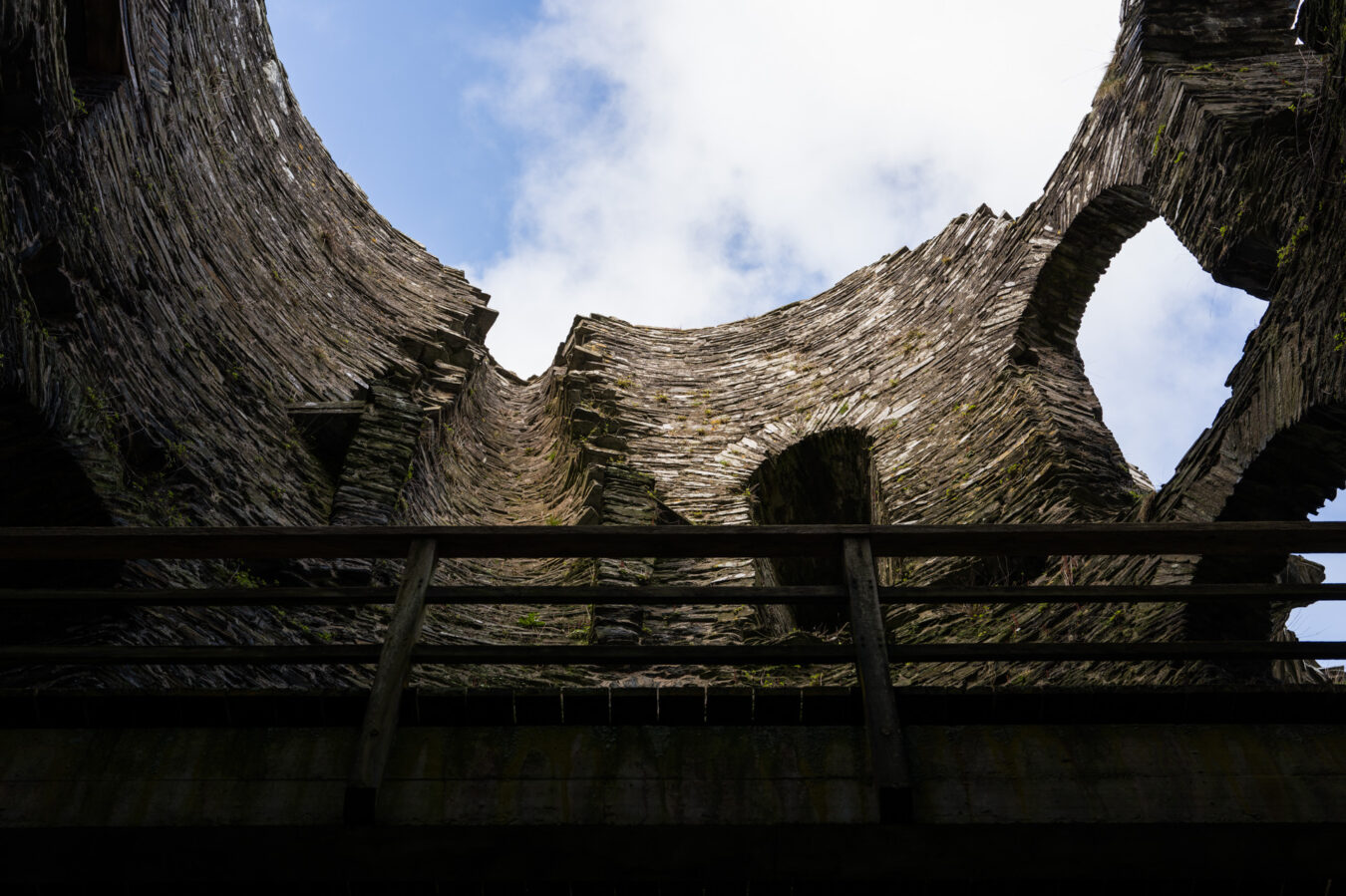
Inside, you will also find beautiful willow sculptures created by Michelle Cain, depicting important princes and princesses who lived there hundreds of years ago.

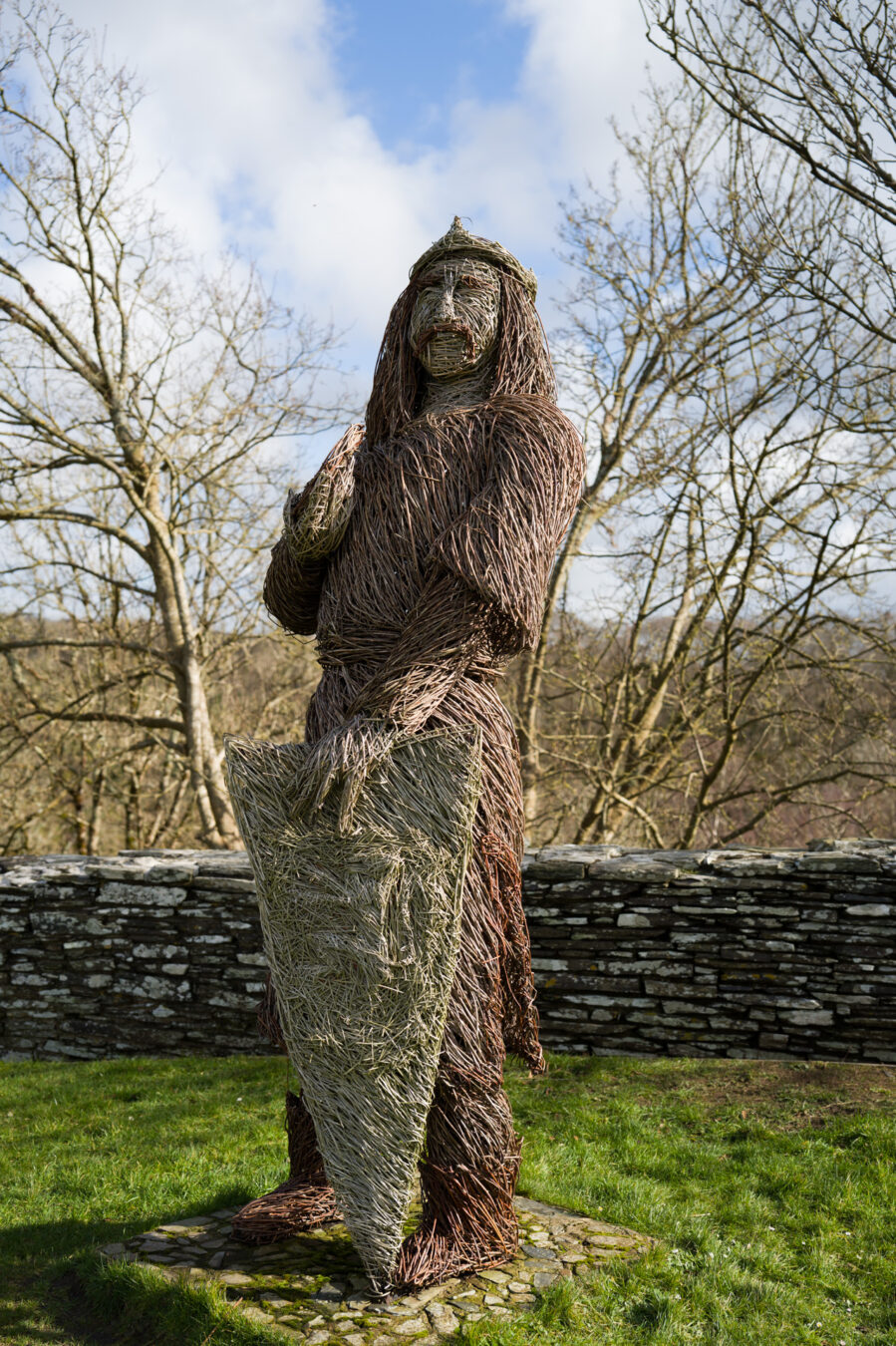
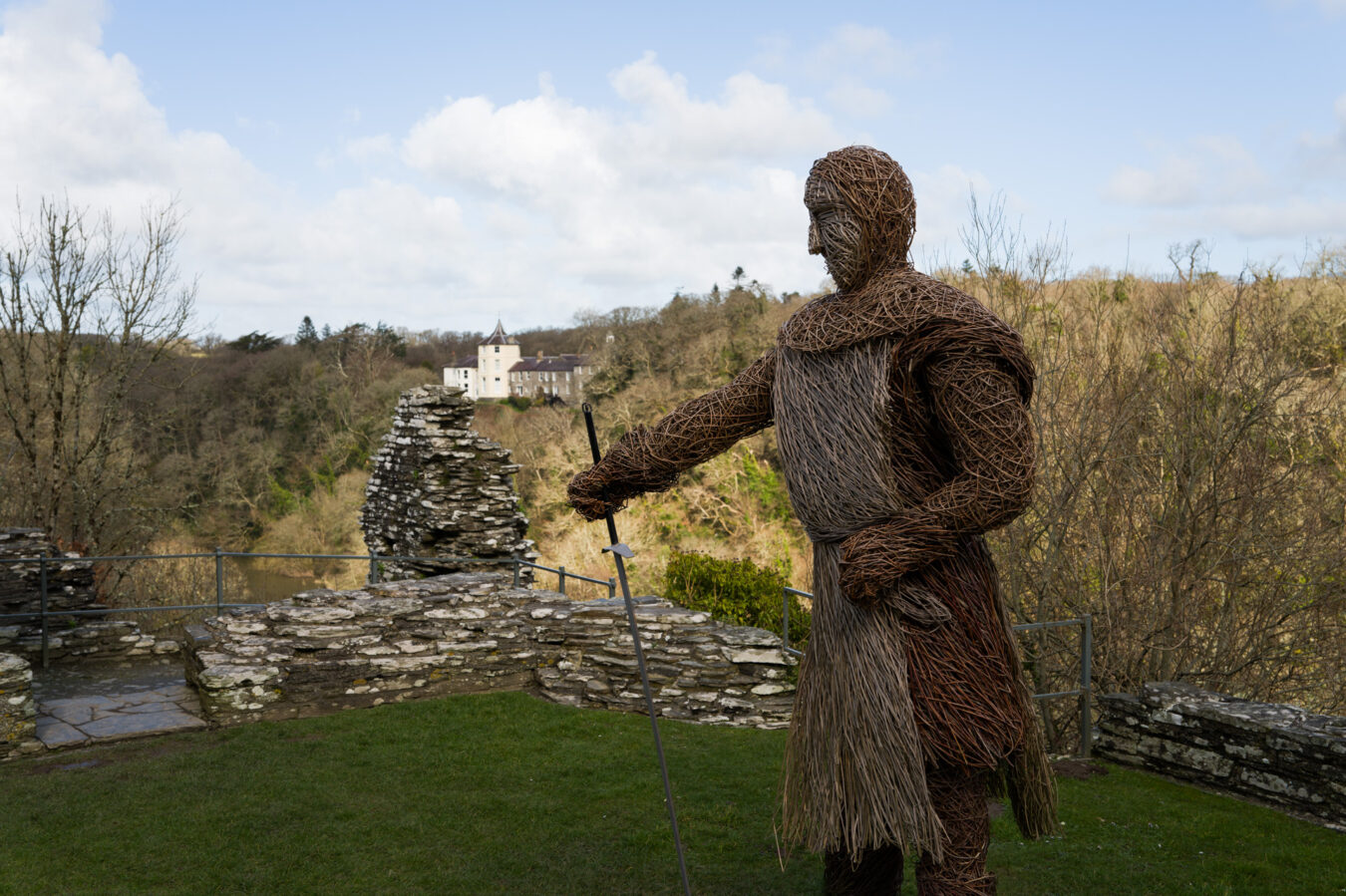
The site is managed by the National Trust, but there is no entry fee. Gates are open daily from 10am to 4pm. There is also a shop selling small gifts, guidebooks, and refreshments, but it is currently closed. The National Trust website does not provide more information about its opening hours, but it is likely to open during half-term holidays or in the summer. Please note access to the top of the towers are closed due to health and safety concerns, which also means you cannot walk on the walls at the top.
You can reach Cilgerran by bus (430 and 390).
quick STOP At siop y pentre
Off-season, you won’t find much open during the day in Cilgerran, but the village shop is worth a quick stop. They served me a very good coffee and a homemade almond croissant—just what I needed for breakfast!
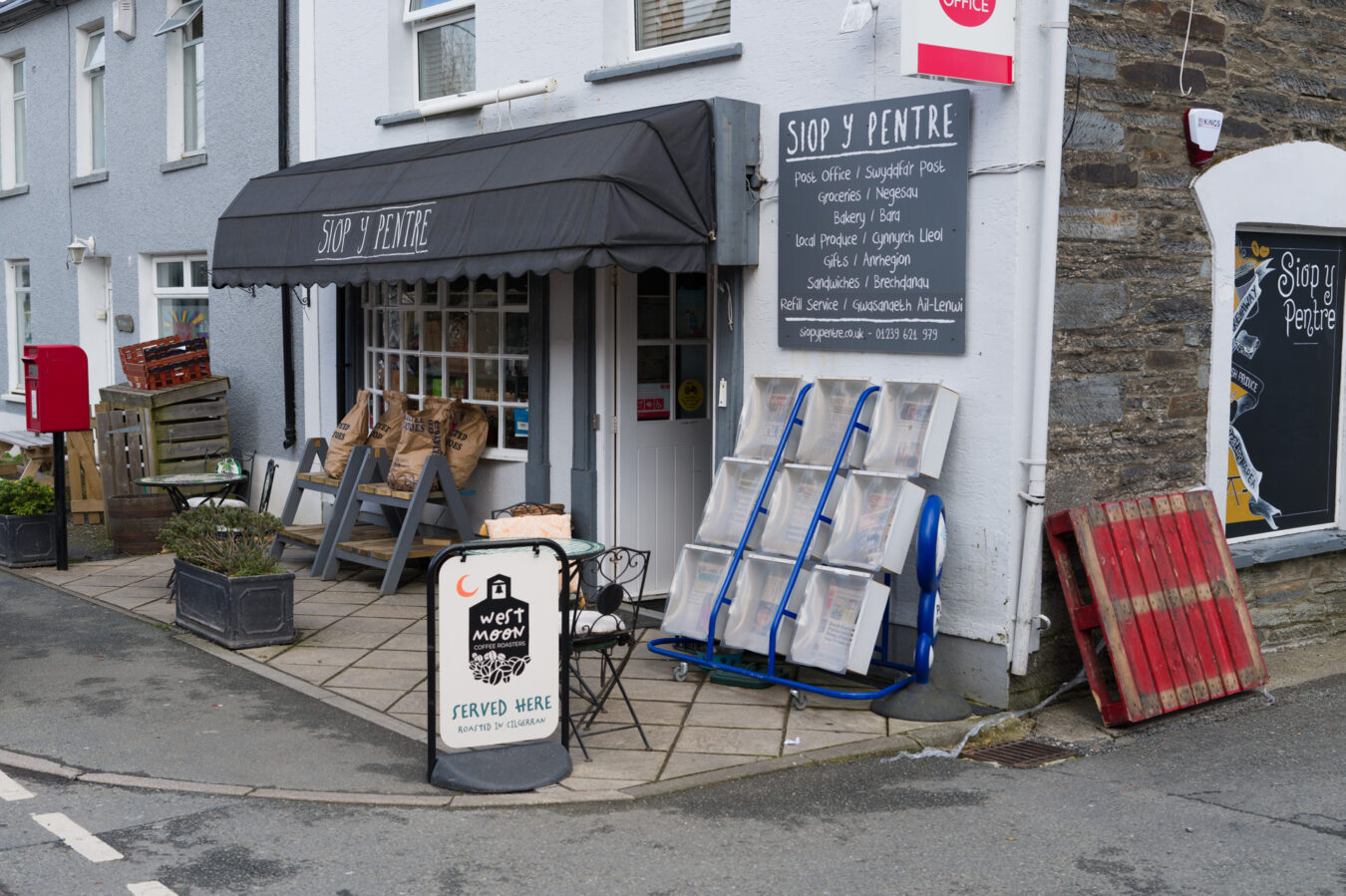
10. Walk in the Ffynone And Cilgwyn Woods
These extensive woodlands (325 acres) are situated in a secluded valley, 7 miles south of Cardigan, and close to Cilgerran, making it easy to visit both sites in one day. From flat valley bottoms to steep valley sides, the area includes four rivers, a waterfall, and an outdoor amphitheatre. You’ll also find the remnants of ancient woodland, including veteran oaks.
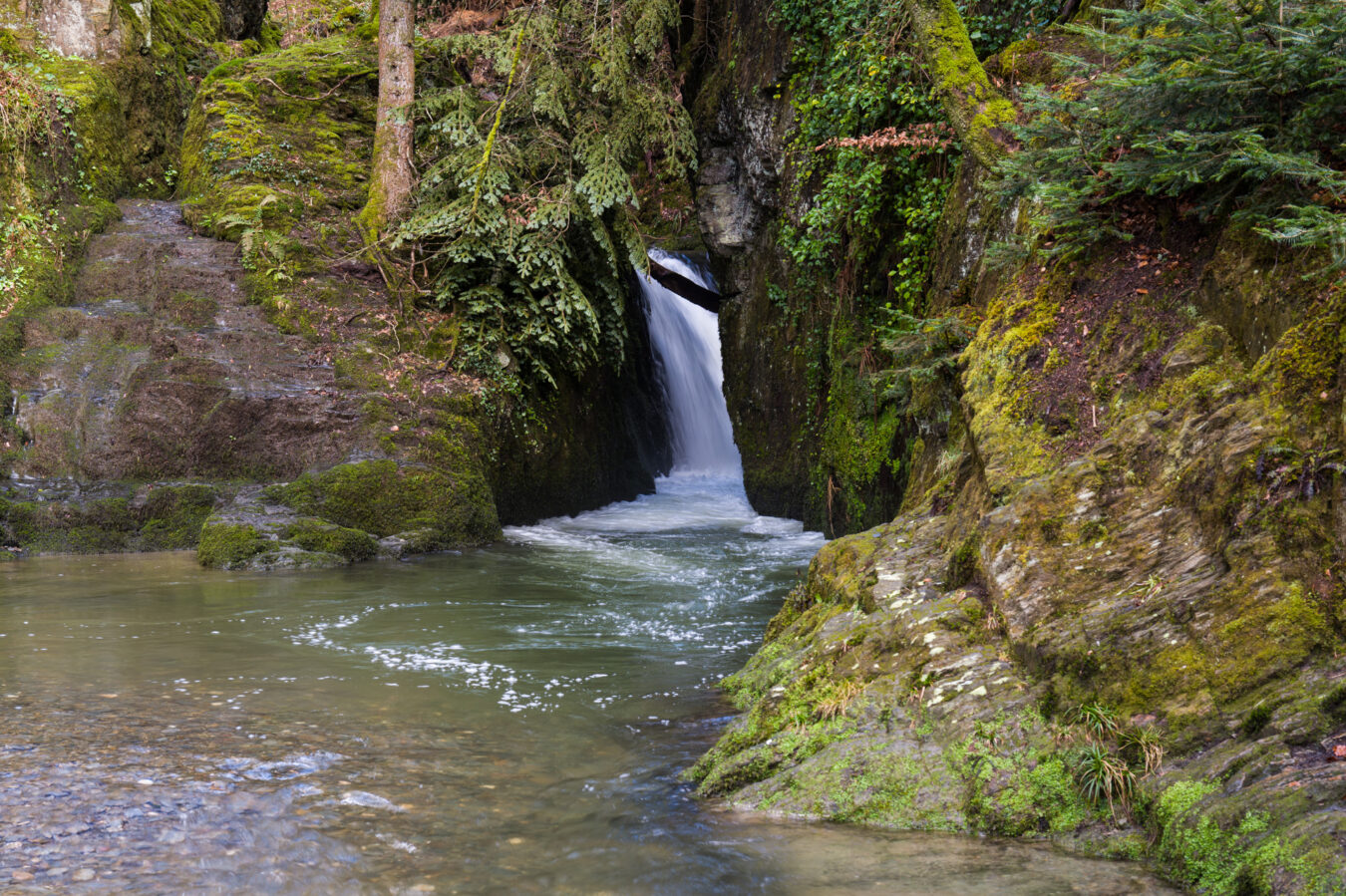
The woodlands are steeped in old folklore tales. They serve as the backdrop for the earliest written stories of the Mabinogion, a collection of the earliest Welsh prose stories, compiled in the 12th–13th centuries from earlier oral traditions.
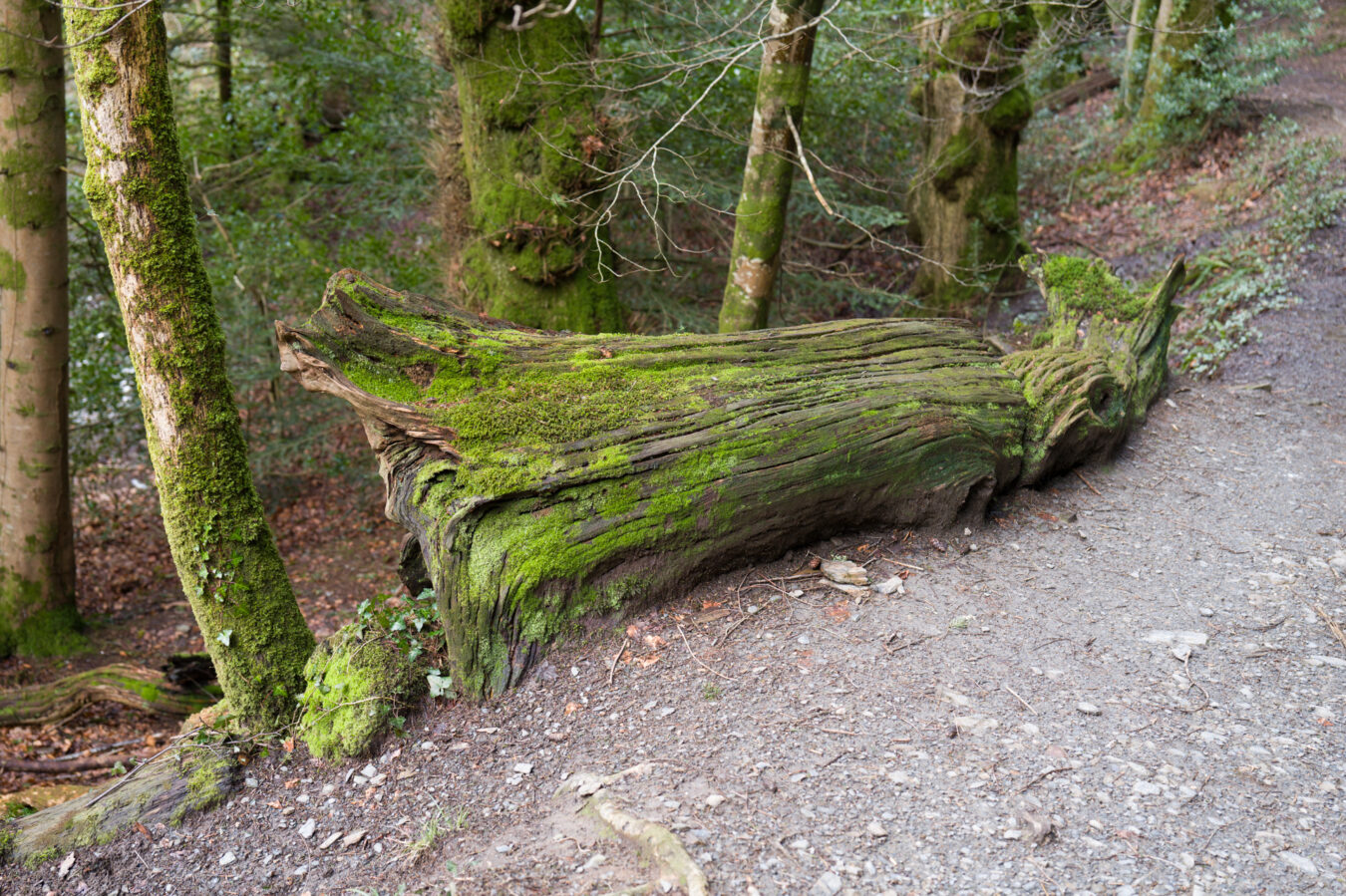
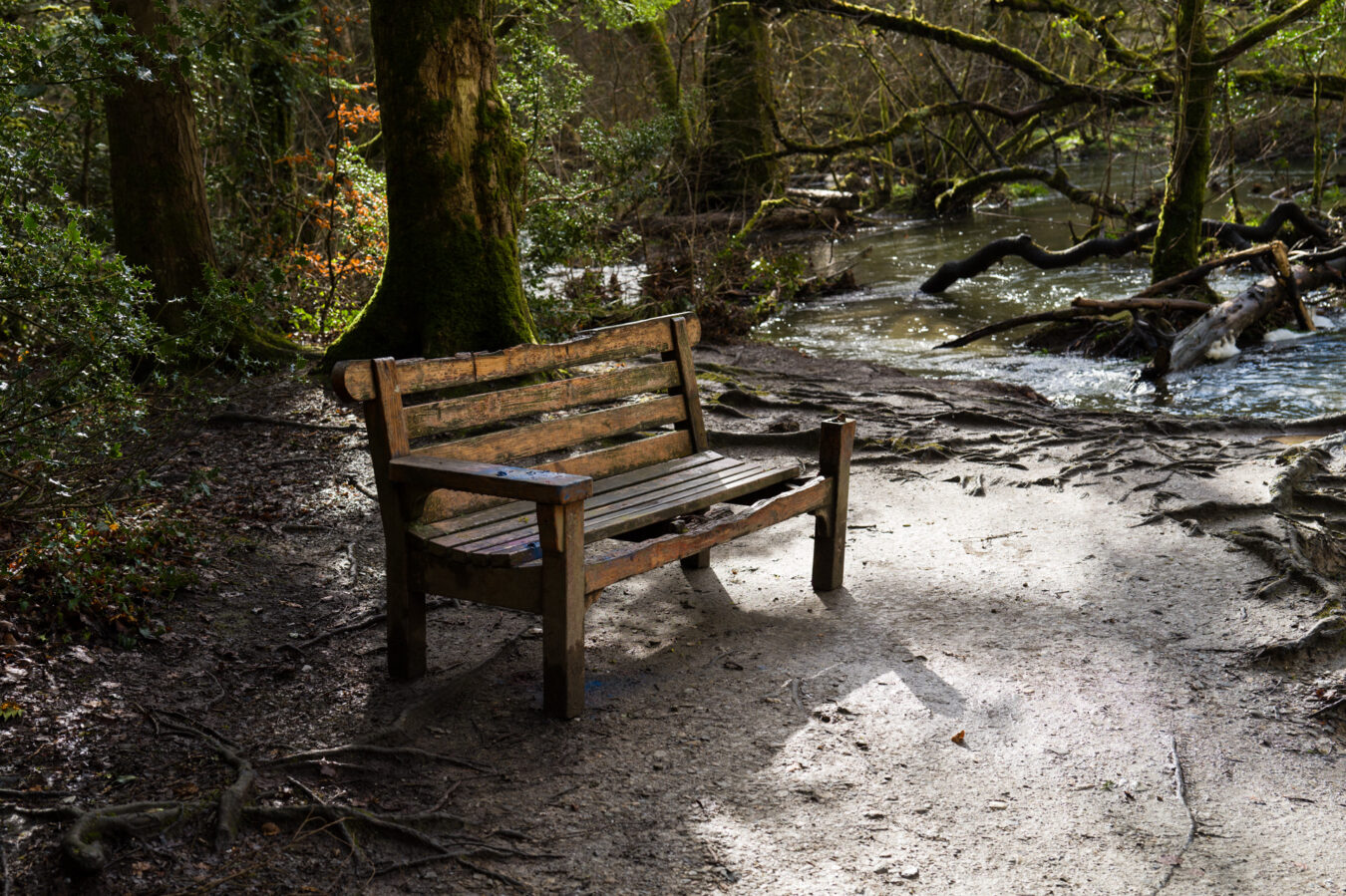
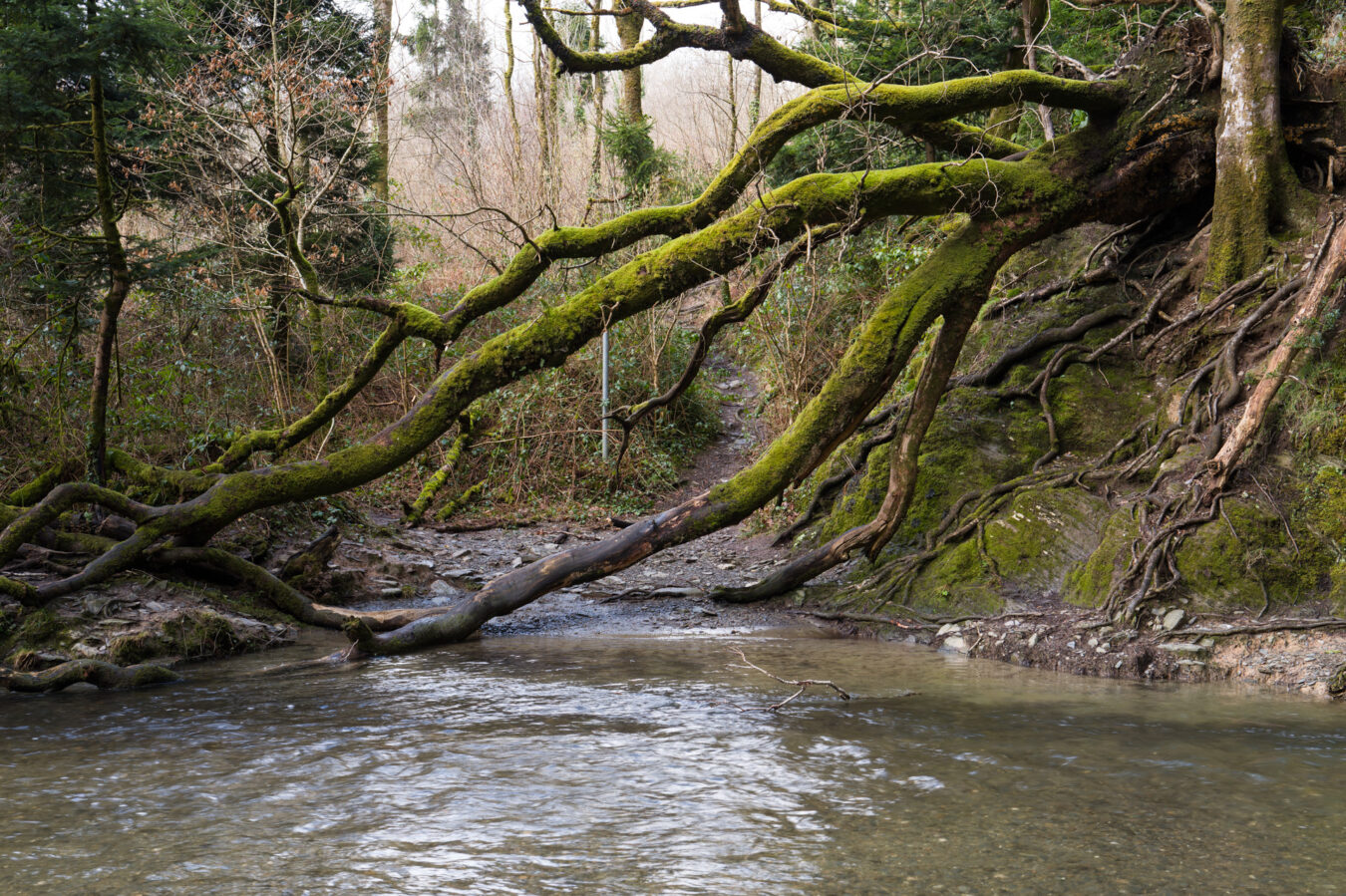
Unfortunately, I didn’t have time to explore the entire path, and some areas were flooded or had fallen trees when I visited. However, even just spending a few hours wandering left me with a very positive impression of a location that is somewhat hidden but definitely worth visiting. Note that the location is quite remote, and there is no public transport nearby.
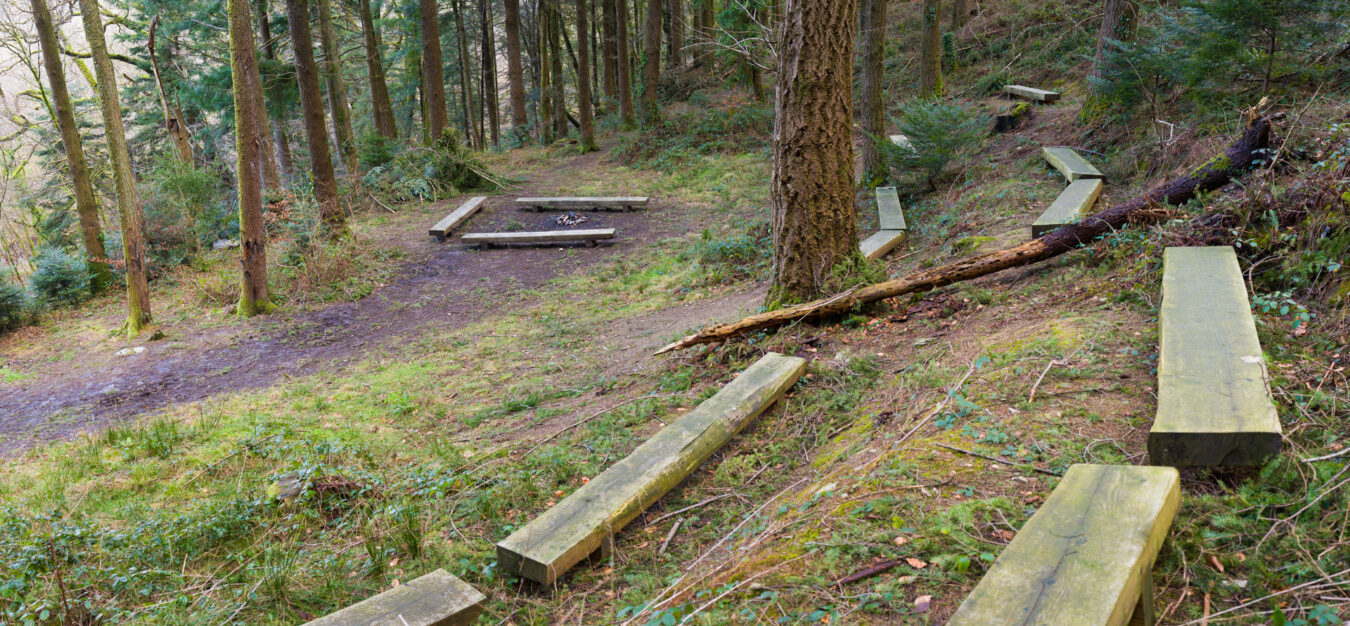
Where To Eat In Cardigan
Cardigan features colourful, feel-good vibe streets filled with independent shops, showcasing the works of Welsh artists, vintage and antique finds, as well as more traditional shopping options, including gift and clothing shops.
Also worth a visit is the Guildhall Market, an intriguing building with a modern Gothic style and Arabic touches on its towers. The indoor market houses an abundance of Welsh products and traders.

And, of course, no stroll through such an atmospheric town would be complete without sampling some of its cafés and restaurants. I’ve already mentioned 1176, but I also had a delicious coffee and scone at Stiwdio3 Café. Another great place for breakfast or brunch is Crwst, known for its artisan bakes. Finally, one not to miss is Pizzatipi, run by four local brothers. Located just by the castle, it serves handmade, wood-fired pizzas. Note that they are open during school holidays and in the summer.
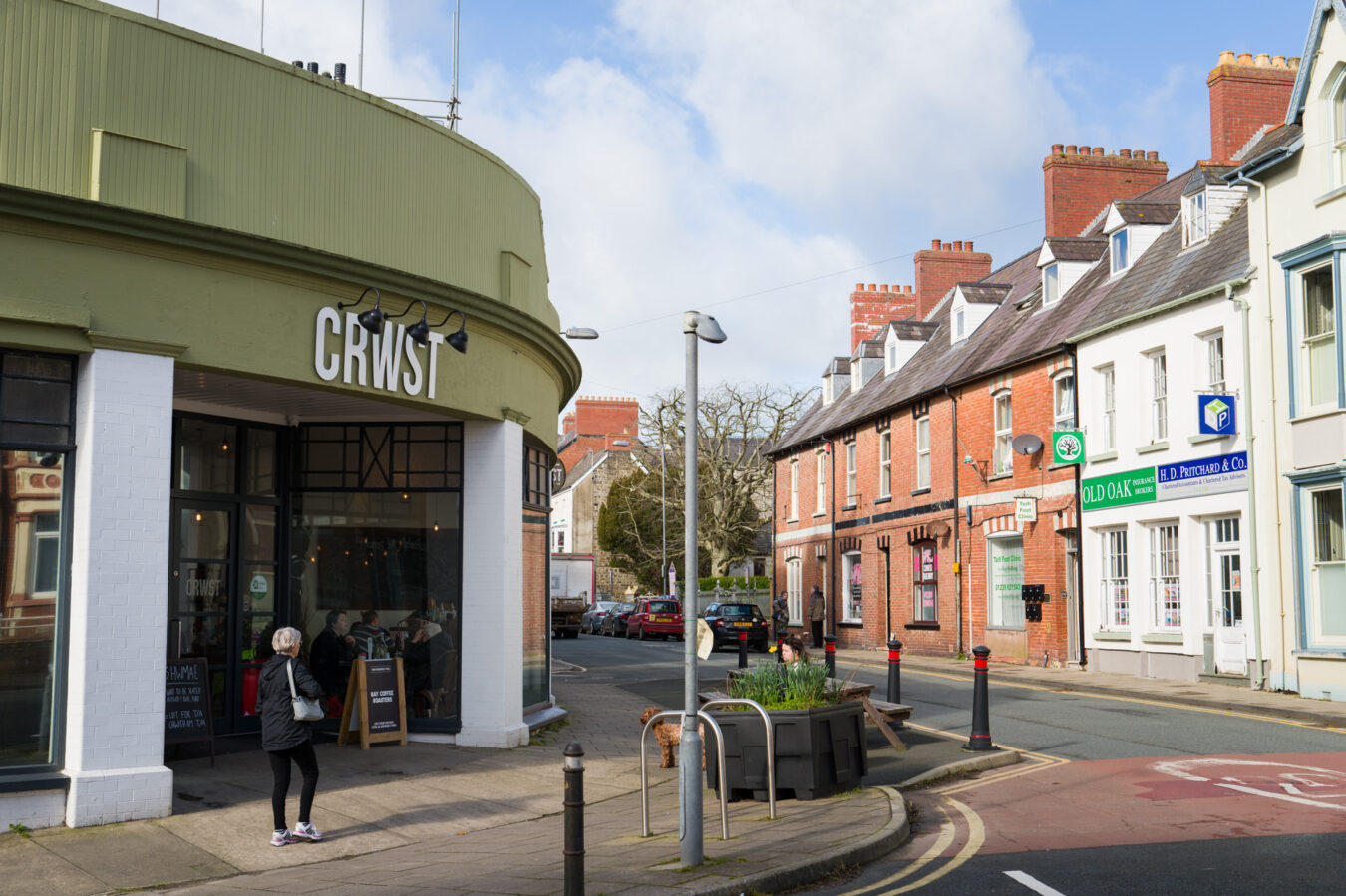
Extra Information
There is a variety of accommodation in and around Cardigan, from caravan parks to hotels and bed and breakfasts. The Visit Cardigan website is a good place to start.
Public Transport and Taxis
There are no trains in Cardigan, and the nearest station is Fishguard (19 miles away) on the Ebbw Vale Line, which connects to Cardiff.
The main way to travel in and out is by bus, with the T5 service linking Haverfordwest in the south and Aberystwyth in the north, from where you can continue by bus or train. Local buses also serve nearby locations such as Poppit Sands and St Dogmaels. More information is available on Traveline.cymru.
Taxi services are also available, and you can find their contact details on Visit Cardigan’s Useful Numbers page.
Parking
There are various car parks in the town centre. One I often use is by the river, west of the castle (Quay Street car park), as well as another further up behind the Guildhall Market building (Greenfield Square car park). Note that the latter is short-stay (up to three hours). Additional car parks can be found east of the castle, including the long-stay Gloster Row car park.
See Cardigan car parks on
Google Maps
EV Charging Points
Greenfield Square car park includes two rapid chargers for electric cars, operated by Dragon Charging. I had the chance to use them, and they worked fine in my experience. However, keep in mind that the car park has a maximum stay of three hours.
Additional charging stations can be found further north, including one behind Theatre Mwldan in the Mwldan car park (PodPoint, two 7kW chargers). There is also a set of fast chargers in front of the Leisure Centre, 22kW slow chargers at Williams Terrace car park, and 7kW chargers at Tesco supermarket.
See Cardigan EV charging stations on
Google Maps
Public Toilets
There are public toilets near the Quay Street car park and further north in the town.
See Cardigan Public Toilets on
Google Maps
Frequently Asked Questions
Is Cardigan Town worth visiting?
Yes, it does, not only because of its important historical connections but also due to its interesting location. You are close to some of the iconic places along Cardigan Bay, such as Mwnt, and also not far from important locations in Pembrokeshire that are worth visiting.
Why is Aberteifi called Cardigan?
Aberteifi is the Welsh name for the town and refers to its position at the mouth of the River Teifi (‘aber’ means ‘mouth’). Cardigan is an anglicisation of the Welsh name Ceredigion, which is the name of the county and also gave its name to the bay (Cardigan Bay, or Bae Ceredigion), of which the town is a part, due to its significant development as an 18th-century Atlantic seaport.
What does Cardigan means in Welsh?
Cardigan is an English word and an anglicisation of the Welsh name Ceredigion, which means ‘Ceredig’s land’. According to legend, Ceredig was the son of Cunedda Wledig, one of the early Welsh leaders who came from the north to reclaim lands in Roman Britain.
Does Cardigan have a castle?
Yes, Cardigan Castle (Castell Aberteifi) is one of the most important castles in Wales, mainly for two reasons: it was the first castle built by a Welshman and is the site where the first Eisteddfod was held.

